NEW YEAR NEW LOOK
PINNER

COMMUNITY THE MAGAZINE OF
SYNAGOGUE ROSH HASHANAH 2022
INDEPENDENCE. DIGNITY. CHOICE.
“Raymond’s stroke had a devastating effect on his and Pamela’s life until they moved in to their Jewish Blind & Disabled apartment. Now they enjoy the best of both worlds –independence with a social life on their doorstep”
Raymond & Pamela moved into their state-of-the-art mobility apartment in 2019.

To
for an apartment visit www.jbd.org or call 020 8371 6611
ENABLED
make a donation or to apply
Registered Charity No. 259480
CONTENTS
FIRST THINGS FIRST
| Dear Friends Rabbi Kurzer
From the Editorial Team Margery Cohen, Elizabeth Harris, Marion Siskin
| Man is a Tree Rebbetzen Abi Kurzer
| Chair's Report Lisa Olins
| Chief Rabbi’s RH Message Chief Rabbi Ephraim Mirvis
| BoD President’s Message Marie van der Zyl
| US President's RH Message Michael Goldstein
COMMUNITY MATTERS
| Care Corner Karen Kinsley
| The Chief Rabbi’s Tribute to Rabbi Kurzer Elizabeth Harris
| Our N'shot Chayil Marion Siskin
| Meet our newest Council
A Profile of Sophie Epsley Marion Siskin
| My Favourite Colours Gerald Isaac
| Ask a Busy Person…… Marion Siskin
| We Three Caretakers
The following have kindly sponsored a page: Dee & Mervyn Beth, Lisa & Andrew Olins, Brenda & Michael Press, Renee & Stuart Sheinman, Edna & Norman Terret, Carol & Stephen Walzer
22 | Volunteering for Leket in Israel Jane Leaver
23 | Gesher School's Summer Fete Sara & Yonatan Levin
24 | What’s a Jewish Girl from Pinner doing working in Formula 1? Rachel Mindell
27 | Siddur Lakol – A Siddur for Everyone Sarah Sultman
28 | Kids' Korner Sara & Yonatan Levin
30 | Team Pinner at the Maccabiah Games
Emma Izon-Siskin, Zak Davidson, Arianna Sultan
THOUGHTS & PERSPECTIVES
32 | Letter Samech Simon Hodes
33 | Little Bear: a Story of Friendship and Fortitude Marion Siskin
34 | The Top Five Hebrew words to change your Yamim Noraim Rabbi Kurzer
36 | Closing a Circle Jonathan Lewis
38 | Happy and Glorious! Coronation Memories
Jane Leaver, Wally & Hazel Gallick, Maurice Levitt, Ruth Stuber
40 | Call The Minyan David Cohen
team: Margery Cohen, Elizabeth Harris, Marion Siskin
Contributors
| Coming out of Hibernation Geoff Goodman
| The Flora of Western Australia: a Tourist’s View David Cohen
| To Move or Not to Move? Barbara and Robin Woolf
| Ben-Gurion University Foundation Hannah Allen
PEOPLE’S PAGES
| People’s Page
| Simcha Photos
| Rosh Hashanah Greetings
HOME & AWAY
| Beekeeping in Pinner Judy Roth
| What's Cooking?
| Pinner Shul Book Club Laura Sidnick
| A Cryptic Crossword Avid Old Swan
| A Yom Kippur Tale Eric Samuel
Budapest’s Rumbach Street Synagogue Margery Cohen
| Where Have all the Flowers Gone? Margery Cohen
Pinner Synagogue www.pinnershul.org
Office Hours: Monday to Thursday 08:30am – 12:00 noon Sunday 10:00am – 12:00 noon
Administrator: Carolyn Abrahams Tel: 020 8868 7204 Email: admin@pinnershul.org
Disclaimer: Pinner Synagogue does not accept any responsibility for the accuracy of the content of any articles in Community Magazine or the consequences of relying on it. Any views, beliefs, viewpoints or opinions expressed by the various contributors and participants are those of the contributor or participant at the time of submission, and do not reflect the opinions, beliefs and viewpoints of Pinner Synagogue, the Editor or any of its employees, agents or subcontractors. Pinner Synagogue shall have no responsibility for any action or omission taken by any person on the basis of reading information or contributions in Community magazine. Advertisers should pay close attention to the requirements of all applicable legislative requirements and advertising codes of conduct when advertising in Community magazine, particularly regarding the accurate descriptions of all goods and services offered to readers of Community magazine. Pinner Synagogue shall have no responsibility or liability in relation to the provision of goods or services offered by advertisers in Community magazine.
Editorial
Photos:
4
4 |
5
6
8
9
10
12
13
14
15
member
16
19
21
41
42
44
45
46
47
47
48
50
53
55
55
56 |
58
Magazine designed and printed by: EP Design Studio Ltd Harrow Business Centre, 429-433 Pinner Road, North Harrow, HA1 4HN t: 020 8567 8727 e: hello@epdesignstudio.co.uk w: www.epdesignstudio.co.uk
Dear Friends
It is hard to believe that we are approaching our fourth Rosh Hashanah since moving to Pinner. So much has happened since 2019, to us personally, to our community and to the world at large. We are happier than ever in this special community and both look back with pride and look forward with great excitement.

As the world seems to be returning to a more predictable rhythm, we are particularly excited about the launch of our new website, based on our ethos of INSPIRE CARE CONNECT, which we hope will help us continue to engage with more and more of our members, as well as the wider community.
by Rabbi Kurzer
On a recent trip to Paris with the Chief Rabbi, I visited the Grande Synagogue de Paris, a truly magnificent building. I was struck by many elements of this remarkable Shul, not least of which was that you could fit most of Pinner Shul on the platform leading to the ark! I was also moved by the inscriptions facing the front and back of synagogue. At the front was the exhortation, ‘Tu aimeras l’Eternal ton Dieu de tout ton coeur’ – ‘You shall love the Lord your God with all your heart’, while above the exit, the inscription read, ‘Tu aimeras ton prochain comme toi meme’ – ‘Love your neighbour as yourself’. These were a wonderful reminder to always keep these two creeds in one’s heart.
However, above all the architecture, religious symbolism and grandeur, there was a simple gesture, made by lay, albeit prominent, members of the community that struck a chord with
me. Only a small number of the 1800 seats in the synagogue bore names, indicating the members who would usually sit there, but the front row was entirely filled with perhaps the most famous Jewish surname in the world – Rothschild. Yet there was something missing from their seats. Whereas the rest of the seats each had an armrest between for comfort, in the Rothschild row, the armrests were missing. Although this looked like an error, we were told it was intentional. The family were and are keen to always be mindful of the fact that, through highs and lows, they must always remain brothers in arms, working together to overcome whatever challenges may come their way.
As we approach a new Jewish year, I am always reminded that we have no idea of what is around the corner. With a looming recession and a new prime minister (unknown at the time of writing!), there will undoubtedly be challenges ahead. Nevertheless, I am convinced that if we face these together, united by our commitment and care for each other, we will only go from strength to strength.
May we all be blessed with a year of health, happiness and success. Shana Tova.
Rabbi Kurzer and family
From the Editorial Team
2019, they hardly had time to settle in before Covid made its presence felt. One of the first communal celebrations to be cancelled was the Rabbi’s Induction. This was righted when Chief Rabbi Ephraim Mirvis attended our Shabbat UK Seudah Shlishit, and paid tribute to the couple. A report on that visit, after another highly successful Shabbat UK at Pinner, can be seen on page 13.

At the beginning of June, Pinner Shul had a surprise guest who welcomed everyone through the doors. The presence of Her Majesty Queen Elizabeth II bought a smile to the face of many, even though it was sometimes just a little disconcerting seeing her in the foyer, taking people by surprise.
The Shul played its part in celebrating her Platinum Jubilee and you can share the reminiscences of members who watched the Coronation on TV.
When Rabbi and Rebbetzen Kurzer arrived at Pinner in
In other parts of the magazine we welcome the arrival of Siddur Lakol, designed to make services more accessible to those for whom the regular siddur presents a number of challenges. ‘Community’ ranges as widely as ever, from beekeeping, via Formula 1 to the story of a bear with a history. We also share the success stories from some of our younger members who recently returned from the Maccabiah in Israel.
We would like to express our thanks to Mervyn Beth who has worked hard on our behalf, approaching local businesses to advertise in Community. This ensures that the magazine comes to you at no extra cost to the Shul.
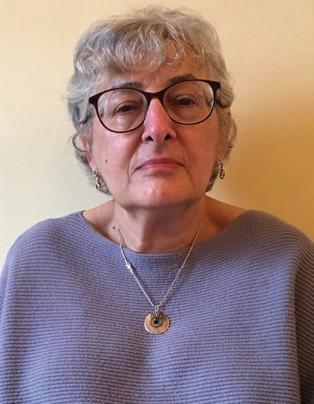
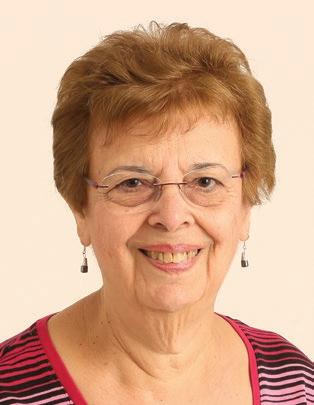
As 5783 approaches, we can all hope for the world to be a better place. We wish you all a Shana Tova and a very sweet New Year.
The Editorial Team
by Margery Cohen Elizabeth Harris Marion Siskin
4 | Rosh Hashanah 2022 � First Things First
Man is a Tree
Something precious about maternity leave is having the opportunity, baby in tow, to do some things that you wouldn’t ordinarily get the chance to do. This past week I found myself at the ‘Rooted Beings’ exhibition at the Wellcome Collection.
T he exhibition explored the symbiotic relationship between plants, fungi and humans. The imagery blended humans and vegetation together, making plants seem lifelike and humans more vegetative. In one serene corner I sat and listened to a meditative recording which encouraged the listener to imagine our body as tree like:
by Abi Kurzer
“Your fingers are roots and branches. There are more fingers branching out from your fingers in order for you to hug the earth and the sky better, more thoroughly. One arm stretches tall; the other seeks deep in the soil.” (Nevarro & Marder, 2020)
Relaxed as I was in this space my mind drifted to the Jewish imagery of the month of Elul of the ‘king in the field’. Usually this is taken to mean that whilst normally a king would be found in his palace, far away and out of reach, during the month of Elul preceding Rosh Hashana and Yom Kippur the King is out in the field and is approachable to anyone. However, looking at the original source in Kohelet 5:8 (which we read on Succot) the actual words say ‘He is the king of a cultivated field’. Perhaps the parable is that Hashem is the king and we, the people are the vegetation that requires a little bit of work.
Elsewhere, the Torah compares a man to a tree of the field’ ‘H’adam Eitz Ha’sadeh’ (Devarim 20:19) Whilst many people focus on the similarities of one human to one tree – I would like to point out that again the verse refers to a tree within a field.
During Elul we exist as single trees in a cultivated field, perhaps an orchard.
‘You are perpetually feeding yourself and others in a delicate equilibrium’ (ibid.)
Life can feel very hectic and there are often many people who depend on us whether children, elderly parents or work matters and it can seem impossible to take time to do something that helps us to feel fulfilled, to develop and grow.
However, surprisingly, when we do take time to turn to those things, perhaps a gym class, a shiur, a walking tour, a new course of learning even though we fear that it will mean less time and energy for all those who depend on us it is more likely to give us more energy and invigoration to be more present to nurture those around us.
Elul is a time where we consider who we are, where we are going and where we want to be. How do we reach our own personal fulfilment, what steps can we take in our own journeys while at the same time, as Jews, we are always

considering how that plays out in our relationships with those around us. Sometimes we need to privilege the needs of others and sometimes our own recognising that in truth they are often the same thing because we are a community. We pray alone in the silent Amida, uttering our personal prayers to Hashem while simultaneously standing together in shul like a single tree in an orchard – a delicate equilibrium.
As you can see, taking time out to go to a museum was something that nurtured me, but indirectly by sharing my thoughts, I hope it has impacted and nurtured you too.
Wishing everyone a happy, sweet and nurturing new year!
(Eduardo Navarro, artist and Michel Marder. Ikerbasque Research Propessor of Philosophy. University of the Basque Country UPVEHU. Vitoria-Gasteiz, 2020)
Rebbetzen Abi
5 | Rosh Hashanah 2022 First Things First � DESIGN | PRINT | WEB SEO | SOCIAL MEDIA EP Design Studio Ltd, Harrow Business Centre, 429 - 431 Pinner Road, North Harrow HA1 4HN T: 020 8567 8727 E: hello@epdesignstudio.co.uk www.epdesignstudio.co.uk Shereen & Nigel Presky wish the Pinner Community a Chag Kasher Vesameach DESIGN | PRINT | WEB SEO | SOCIAL MEDIA EP Design Studio Ltd, Harrow Business Centre, 429 - 431 Pinner Road, North Harrow HA1 4HN T: 020 8567 8727 E: hello@epdesignstudio.co.uk www.epdesignstudio.co.uk Shereen & Nigel Presky wish the Pinner Community a Chag Kasher Vesameach Shereen & Nigel Presky wish the Pinner Community a Happy & Healthy New Year By appointment only EP Design Studio Ltd Harrow Business Centre, 429-433 Pinner Road North Harrow, Middlesex HA1 4HN T: 020 8567 8727 E: hello@epdesignstudio.co.uk www.epdesignstudio.co.uk Design | Print | Web SEO | Social Media
Chair’s Report
Dear Member
As I write my report for the Rosh Hashanah magazine, I’m in a slight panic! I missed the deadline, but have been given my last chance to write it by today. In all honesty my problem was just what to put in it, when so much has happened in Pinner since I wrote to you pre-Pesach.
Where to start and what to focus on is really my biggest problem, but here goes….
I will start with our truly inspiring, enriching and sociable Shabbat UK events, incorporating the ‘official induction of Rabbi and Rebbetzen Kurzer,’ two community meals, fourteen ‘Kiddush at Home’ venues, the New Generation lunch, and a visit from Chief Rabbi Mirvis. The community came out in force – young and young-at-heart, families, singles and many for whom this was their first visit back to the Cecil Park building since early 2020. The event was once again managed by Debra Levin and Shereen Presky plus many volunteers from the community without whom it would not have been such a success – thank you all once again.
– your generous donations at two communal appeals plus a lot of hard work from many volunteers (ably organised by Gerald Isaac) have made this possible and it really showcases our forward-thinking innovative community in the best way. Please spread the word to your friends and family – we want as many as possible to view our community.
by Lisa Olins
This was followed by our (and my) first in person AGM since 2019. It was pleasing to see so many people attend and demonstrate their commitment to the Pinner Community. There was much lively discussion as you might expect. You will be pleased to know that we have already set up a small team to commence discussions on enhancing/changing our services and I thank Jeffrey Samuels for starting this off and Andy Wigman and Gerald Isaac for agreeing to lead the initial projects.
In early June we celebrated our Queen’s Jubilee and Shavuot over the same weekend. Whilst we were unable to have a street party, we were able to celebrate our N’Shot Chayil (Philippa Gerard and Elizabeth Singer) with the traditional Pinner ‘Strawberries and Ice Cream’ kiddush, hold an in person Tikun Leil for the first time since 2019, enjoy a truly wonderful and joyous BBQ (for 180 people), and conclude with our traditional Neilat HaChag. Once again, we were able to re-engage with people who had not been able to attend Shul for some time, and it was a wonderfully happy weekend and Yom Tov.
We are also having regular kiddushim after shabbat in the Henry Jackson Centre and have reinstated our Summer Seudah Shlishit series. These regular events are only possible because of your generous sponsorship and the generous giving of time to put food on plates! At this point I really want to thank Natalie Levy for restarting the Kiddush Rota and Tina Benjamin for taking over the organisation of the Seudot.
And I cannot complete this brief summary without mentioning our website www.pinnershul.org I really hope you will have made time to take a look and use some of the information
So now we move towards the Yamim Noraim. We are in the process of arranging services and other activities for all our members at The Harrow Arts Centre and the Cecil Park site. Your allocated venue will have been sent with this magazine and we look forward to seeing as many of you as possible and….NO BOOKING REQUIRED ��
As you know, just before Yizkor on Yom Kippur we have traditionally made our appeals to the community for funds for a local project (to be decided) as well as US Chesed, a UK based and Israel based Jewish charity. I’m delighted to share that this year our chosen Jewish charities are The Jewish Deaf Association and Youth Aliyah Child Rescue.
Last year’s charities were World Jewish Relief and MyIsrael. Thanks to your generosity each charity received over £6,000. You may remember that through MyIsrael we supported three causes: Yozmot Atid, Maslan and The Garage.
● Yozmot Atid empowers women from low socio-economic situations to establish and develop small businesses and your donation will provide funding for two women for a year and one woman for six months to attend the course at Yozmot Atid.
● Maslan offers a lifeline to victims of sexual abuse and domestic violence in the South of Israel. You have provided funding for 49 therapy sessions.
● The Garage is an art school for people struggling with mental health, which helps them learn the skills to pursue a career in the arts. You have provided funding for 170 students and 70 graduates at The Garage to receive mentoring for almost two months.
In concluding, I want to let you know that we are aiming to provide you with a varied programme across the Yamim Noraim and through to Succot, Shemini Atzeret and Simchat Torah. We hope it will provide religious, educational and social activities for you, your friends and family. Please join us – your community depends on it.
All that remains is to wish you all a Happy and Sweet New Year, an easy and fulfilling Fast and a dry Succot! Lisa

6 | Rosh Hashanah 2022 � First Things First


Sponsor a puppy for Rosh Hashanah and give a blind Israeli the chance of real independence Get a certificate, cuddly Labrador toy and access to your puppy webpage 020 8090 3455 www.israelguidedog.org.uk Registered charity no 1188449
We have a fascinating family custom: at the Pesach Seder our family sings the words of the passage known as ‘Chasal Siddur Pesach’ to the tune of Chanukah’s Maoz Tzur.

The Chief Rabbi’s Rosh Hashanah Message 5783


This has prompted me to consider what the festivals of Pesach and Chanukah have in common. Of course, both celebrate the miraculous intervention of the Almighty to save our people and both are eight days long in the Diaspora. Interestingly, if necessary, Jewish law requires one to sell one’s clothing or receive tzedakah in order to purchase candles for the Chanukiah. This is strikingly similar to Pesach, when one is required to sell one’s clothing or receive tzedakah in order to buy wine for the required four cups. There was also a fascinating and beautiful custom among the Jews of Izmir in Turkey to use their leftover oil from the previous Chanukah to light a small oil lamp, which they used for Bedikat Chametz, the search for chametz, on the night before Pesach.
In his book entitled ‘Messy’, the economist Tim Harford tells a remarkable story about the pianist Keith Jarrett.
In January 1975, arriving at the Cologne Opera House to play a Jazz concert for 1400 people, Jarrett was horrified not to find the grand piano he had been expecting. The piano was far too small to achieve any quality of sound, the keys were sticking, the pedals didn't work and the felt was worn away in the upper register. Jarrett explained that the event would have to be cancelled, but the inexperienced concert promoter begged him to reconsider. After much pleading, Jarrett took pity on the young promoter and agreed to perform on the unplayable piano.
A moment of musical history followed. Forced to adapt and improvise, Jarrett energetically achieved the necessary volume from the defective piano. He avoided the tinny high notes and focused instead on the middle register. Remarkably, Jarrett brought the house down and the recording of this concert became the best-selling solo Jazz album and the bestselling piano album of all time.
In some respects, our post-pandemic experience feels like being asked to perform on an unplayable piano. During an exceptionally challenging period, we longed for a time when we could step back out onto the stage of our lives, free of restrictions. Baruch Hashem, this has indeed transpired, but the world we have returned to is not the one we expected. The enduring impact of the pandemic and the devastating invasion of Ukraine have been compounded by political instability both at home and abroad. Many people are struggling financially. Significant aspects of our national infrastructure, from healthcare to travel, seem to be in turmoil. Many societies are polarised and fractious. We are far from where we want to be.
Rabbi Joseph B Soloveitchik differentiated between the concepts of ‘Goral’ (fate) and ‘Yiud’ (destiny). Our fate is the hand of cards that we are dealt; our destiny is the way we choose to play it. Responding positively to the external forces beyond our control, we have the capacity to carve out a glorious destiny by adapting, learning from our challenges and becoming stronger because of them.
In Parashat Noach, Hashem declares, “When I cause clouds to cloud over the Earth, then the rainbow will be seen amongst the clouds.” The most spectacular rainbows, bathing the heavens in an arc of beautiful colour, are not created despite the clouds, but precisely because of them.
Like a rainbow of spectacular beauty breaking through the darkest of storm clouds, you have responded to the pandemic with an unprecedented outpouring of lovingkindness, fundraising and volunteering. However, as we consider our shared purpose over these High Holydays, many serious
Yet, the most substantive, thematic connection between Chanukah and Pesach is the centrality of education as a Jewish value. Both festivals lead us to appreciate the crucial importance of learning in our tradition; a lesson encapsulated by our Sages, who declared, Vetalmud Torah Keneged Kulam the study of Torah supersedes all (Mishnah Pe’ah 1).
The Hebrew word Chanukah (dedication) comes from the same root as chinuch (education). Indeed, dedication to education is a key feature of the Chanukah narrative. The survival of our spiritual legacy, despite the intentions of the Hellenists, was rooted in our commitment to teaching Torah and its values.


The primary purpose of the Pesach seder is education “And you shall relate to your child on that day saying, “It is because of this that the Almighty performed these miracles for me when I left Egypt” (Shemot 13:8). But, more than that, the Pesach seder itself sets out the ideal framework for the most impactful education an audio visual, experiential encounter which utilises storytelling, questioning and a veritable assault on our senses to ensure that the experience is an unforgettable treat. It is no accident that of all our traditions, the seder night remains the most widely observed, even in families who would otherwise consider themselves entirely secular. Research has shown that more Jews attend a Pesach seder every year than those who fast on Yom Kippur. Pesach teaches us what the best teachers already know that the most effective education must be experiential.
challenges remain. This is a time to focus on our spirituality and the real purpose of our existence, to redouble our commitment to our families, as well as to our communities and to society, and to do more for the most vulnerable. In this spirit, we will succeed in not only playing the unplayable piano, but also in creating something of immeasurable and lasting value.
This lesson is of particular relevance to us today. British Jewry is blessed to have truly outstanding schools which, year on year, are heralded as being amongst the finest in the country. I am always personally moved by the dedication shown by trustees, governors and staff at our wonderful schools and they would be the first to say that there is nothing more impactful or foundational to a Jewish child’s identity, than a powerful Jewish experience.
Valerie and I extend our heartfelt wishes to you all for a happy, peaceful and fulfilling New Year.
Whatever the setting; formal or informal, at school or at home, may this Pesach present an opportunity for us to refocus on a truism of Jewish life future is quality Jewish education.

Valerie and I wish you a chag kasher ve sameach
Chief Rabbi Ephraim Mirvis
FOR A
The Chief Rabbi’s Pesach Message 5778
Chief Rabbi Ephraim Mirvis
March 2018 • Nisan 5778
Resource offers a FREE full range of tailored services to help you find your next role LOOKING
JOB? NETWORKING CONTACTS to access the hidden jobs market A PERSONAL ADVISOR that will increase your confidence Charity No. 1106331 EXPERT CV WRITING to secure you an interview INTERVIEW PREPARATION to ensure you land the job CALL RESOURCE NOW on 020 8346 4000 or visit resource-centre.org Take the first steps to getting back to work 8 | Rosh Hashanah 2022 � First Things First
Message from the President
For the past two years this message has focused on a pandemic which took our loved ones from us, destroyed incomes and tore families apart. Mercifully, the worst appears to have passed but, despite this, life for many of us has not been easy this year.
he cost of living has spiralled out of control, with energy prices and household bills at a higher level than any of us can remember. Like the Covid epidemic which preceded it, there is not a huge amount any of us can do to change the situation as individuals. However, as a community, what we saw during Covid was a wonderful willingness to help our friends and neighbours, the elderly and the less able among us. This spirit is just what we need now when so many people are experiencing so much hardship. I hope and trust that we are all doing everything we can to help those in need.
Of course, we don’t need to be reminded that there are millions suffering in Ukraine, as Russia continues its senseless aggression there. We continue to both be inspired by the resolve of the Ukrainian people, and to pray for peace. I urge all those who are able to donate towards the charities collecting on behalf of the victims of this terrible conflict.
TOver the past 12 months, we have advocated for the small but vibrant Belfast community which found itself struggling for its very existence after the Northern Ireland Protocol cut off its supply of kosher food.
When local, regional and Devolved Assembly Elections took place, we ensured that every candidate had access to a copy of our Jewish Manifestos, which outlined all of the key areas of interest and concern for Jewish communities across the country. And online, thanks to Board of Deputies campaigning, the Government wrote to social media companies asking for the adoption of the International Holocaust Remembrance Alliance (IHRA) definition of antisemitism so that racists will no longer be able to harass Jewish users with impunity.
❝ ❞
...what we saw during Covid was a wonderful willingness to help our friends and neighbours, the elderly and the less able among us.
Recent weather events have highlighted the importance of action against climate change. We have been working with our partner organisation EcoSynagogue to make a difference within our community and were out in force at the COP26 summit last November.
On a happier note, this summer we celebrate the second anniversary of the Abraham Accords which brought together Israel, the United Arab Emirates, Bahrain and Morocco in a landmark agreement which has sparked new hope in the Middle East and the prospect of a peaceful future to the region. Sadly, not all parties have bought into the spirit of reconciliation which is why we campaigned hard for the UK Government to ban Hamas in its entirety and were delighted with the legislation which means that the organisation is no longer able to lobby for support in this country.
We are also working to facilitate the implementation of the ground-breaking Commission on Racial Inclusivity in the Jewish Community, which considered 17 areas of Jewish communal life and made 119 recommendations. We provide official inspection of religious education in Jewish schools through the Pikuach organisation and our team monitors and protects our religious freedoms.
The Board of Deputies is here to help and support Jews across the UK, whatever their interests and concerns.

I wish everyone a Shana Tovah and a happy year ahead.
Marie van der Zyl - President
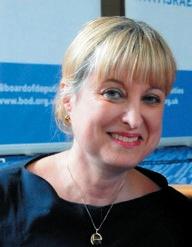
3 Ladbrook Close, Pinner, Middlesex, HA5 5LB Telephone – 020 3137 5398
Email – admin@essentiallyfinancial.co.uk Website – www.essentiallyfinancial.co.uk


TISHREI 5783
Essentially Financial Limited is an appointed representative of Flying Colours Advice Limited, which is authorised and regulated by the Financial Conduct Authority.
Marie van der Zyl
9 | Rosh Hashanah 2022 First Things First �
President of the United Synagogue’s Rosh Hashanah message 5783
One of my favourite prayers in our Shabbat liturgy is often overlooked. Just before the Prayer for the Royal Family we say a prayer to bless all members of our shul and the wider Jewish community.
The prayer begins “May He who blessed our forefathers, Abraham, Isaac and Jacob, bless all this holy congregation”. We ask God to bless “those who unite to form synagogues for prayer” which speaks, I feel, to the United Synagogue’s history.
Back in 1870, five synagogues decided that they were stronger together and joined forces to become, via an Act of Parliament, the United Synagogue.
Instead of duplicating resources, they worked together for the good of the community. This was a revolutionary idea and although we have since grown and changed considerably, it still underpins what we do a century and a half later.
The prayer asks God to bless everyone who comes to shul to pray and those who make donations to the community (“those who provide lamps for lighting and wine for Kiddush and Havdalah, those who provide food for guests and charity for the poor”).
Finally, we ask God to bless “all those who occupy themselves faithfully with the needs of the community”. To me, this line is absolutely critical, because volunteering is at the core of the United Synagogue. Across our communities we are blessed to have well over 1,000 people who give of their time week in, week out to support their shul and community.
Whether it is running children’s services, doing security, preparing the kiddush, arranging events, supporting our older and vulnerable members, inviting speakers or davening and leyning, there is a dizzying array of activities carried out by our volunteers.


And on top of that, each of our communities is led by a local team of committed lay leaders who direct the day-to-day running of communal life and implement its development plans. Communities differ in size, geography and members’ backgrounds, so our structure empowers local people to make local decisions.
Research shows that volunteering together builds community, helps us make connections with each other and improves our wellbeing. We know from experience that the greater our sense of engagement with our communities, the more we are able to find a shared purpose.
If I may ask one thing of you this Rosh Hashanah, it’s to see what
you can do to help your community. Whether it’s once a year or once a week, your time will make a real difference: our amazing communities can only thrive with the support of volunteers.
Slightly paraphrasing the ending of the prayer, may God send you and your families blessings and success in all you do and may He bless our entire community. Shana Tova.Michael Goldstein, President. United Synagogue
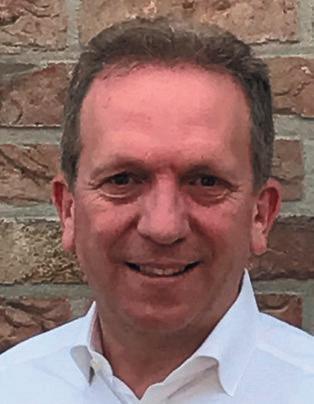 Michael Goldstein
Michael Goldstein
SHANA TOVA FROM THE TEAM KKL Executor and Trustee Company Ltd (a Company registered in England No. 453042) is a subsidiary of JNF Charitable Trust (Charity No. 225910) and a registered Trust Corporation (authorised capital £250,000). Call 020 8732 6101 or email enquiries@kkl.org.uk KKL Executor and Trustee Company Ltd (a Company registered in England No. 453042) is a subsidiary of JNF Charitable Trust (Charity No. 225910) and a registered Trust Corporation (authorised capital £250,000). Leave a gift in your Will to Israel through JNF UK and support Israel for life. Providing legal and personalised pastoral care services 10 | Rosh Hashanah 2022 � First Things First
peaceful, healthy
safe

This Rosh Hashanah, we look forward to being able to join together and celebrate as fully as we have been able to for some time. Throughout the pandemic, CST has been here, working to continue to protect our community, navigating the many challenges that the last two-and-a-half years have provided.
Reports of anti-Jewish hate in the UK reached an all-time high in 2021 when Israel was at war; events in Buffalo, New York and Colleyville, Texas have shown that extremists from across the ideological spectrum often hold antisemitic beliefs at the core of their worldview, and are prepared to carry out terrorism at any time, anywhere. We know from bitter experience that hatred festers in times of economic uncertainty and that, unfortunately, the Jewish community suffers the sharp edge of society’s need to find a scapegoat. We must be alive to the dangers that confront us.
In light of these realities, and as the world returns to something approaching what we knew before, CST’s commitment to guaranteeing the safety of our community to the best of our ability is unwavering. This is a duty we always approach with a great sense of responsibility, humility and pride. After a period when all activity has been somewhat limited, we
emerge strong, focused and ready to play our part in facilitating the thriving of Jewish life in the New Year.
To fulfil this purpose, we rely on the work and dedication of our fantastic volunteers. They are the people without whom our entire mission would fall apart.
Our volunteers receive the most up to date training in modern-day security tactics. On our training courses you will be given the knowledge and skills needed to not only protect yourself, but the friends, family and community you are perhaps sitting among today. Our dynamic sessions, delivered by expert instructors, will not only educate you on the various threats to the Jewish community, but also how to combat them. Physical training in self defence, problem solving under pressure, teamwork, camaraderie and fun are all components of the course. All CST’s training courses are free of charge.
If you are interested in finding out more about becoming a CST volunteer security officer, or any other training offered by CST please contact us at recruitment@cst.org.uk.
From everyone at CST, we wish you a safe, Happy New Year and meaningful fast.

CST is a registered charity in England and Wales (1042391) and Scotland (SC043612) National Emergency Number ( 24-hour ) 0800 032 3263 London (Head Off ice) 020 8457 9999 Manchester (Northern Regional Off ice) 0161 792 6666 Scan the QR code to visit CST’s social media accounts | www.cst.org.uk CST wishes our community a
&
New Year 11 | Rosh Hashanah 2022 First Things First �
CARE CORNER
by Karen Kinsley Welfare Coordinator

This quote makes me smile as I think about our wonderful Pinner Shul community and, especially, our amazing welfare volunteers who do so much to support it. A work of art takes time to perfect. It is valuable and complex and needs lots of different input – just like our community. Pinner Care Welfare team volunteers help to build a community life that is caring and enriched and our team look forward with positivity to a meaningful year ahead – a beautiful work of art!
So, let me share with you what the team have been up to over the past six months. Our Pinner Care volunteers have been busy bees as usual and continue calling on all our over 80s at least twice a year. They visit and support people on their own and do deliveries and phone calls, offering support where necessary, especially to members with limited social networking skills. On Pesach and Shabbat UK, we delivered meals to 30 members who loved receiving the meals and chatting to the volunteers who delivered them. One man told me ‘How wonderful to be part of Shabbat and part of our community. I look forward to my meal immensely’. Another member emailed me ‘We should like to thank you very much for the lovely Shabbat meal which was kindly delivered by a friendly volunteer. It was a joy to chat to someone and this meal will certainly be enjoyed’. It gives us great pleasure at Pinner Shul to be inclusive and make sure those who can’t attend services, for whatever reason, still feel valued and very much part of our community.
We are delighted to see members returning to services and events and hope we can continue to encourage more to do so. Our Thursday morning Pop up café ‘Chat and Share’ is open to all and really embraces our community. We are hoping to continue meeting in person every week apart from the last Thursday of each month when we will continue our online talks. We often theme our meetings with a particular highlight – one of them being our wonderful Platinum Jubilee café which more than 45 people attended. The temptation of scones, cream and jam obviously worked! With regular attendance of between 20 to 30 people, I think people love
the regular informal chance to chat and make new friends. The café also organises occasional outings to interesting local places. We’ve hosted trips to Headstone Manor Museum and Bentley Priory Museum – all very well attended. Do keep an eye out for more coming up. When you read this, we will have had our Summer Tea Party spending time with our wonderful senior members over a cup of tea with some entertainment provided.


In June, I attended the United Synagogue Chesed Thank You event held at St John’s Wood Synagogue. Due to Covid, this was the first time in four years that the event could take place. It was inspirational to see so many people involved in the Chesed team and we were welcomed by the Chief Rabbi and Michelle Minsky, Head of United Synagogue Chesed. Thirty-two United Synagogue communities were represented at the evening and it was a delight to meet new people. The work we do at Pinner Shul is very much appreciated by the wider community and the Chief Rabbi encouraged us to keep up our ‘chesed’ and good work!
Happy New Year to you all and do not hesitate to contact me if you would like more information or would like to get involved with the Pinner Care team.

‘Remember that the meaning of life is to build a life as if it were a work of art’ (Rabbi Abraham Joshua Heschel)
12 | Rosh Hashanah 2022 � Community Matters
The Chief Rabbi’s Tribute to Rabbi Kurzer
by Elizabeth Harris
At the end of the wonderful ShabbatUK in Pinner this May, we were honoured by Chief Rabbi Mirvis who came to our Seudah Shlishit to give his personal tribute to Rabbi Kurzer. His original induction, explained Jonathan Mindell in his introduction, was due to have been in March 2020, but was cancelled at very short notice due to the Covid pandemic.
In his opening remarks Jonathan gave us an example of Rabbi Kurzer’s initial impact on the community. He referred to the regular women’s discussion group which used to take place at 11am on Shabbat morning. He noted that the ladies had requested that this be brought forward to 10am, because the later start meant that they would miss the Rabbi’s sermon!
Rabbi Mirvis began by stating that this was not a normal induction of a communal rabbi as this would usually be done near the beginning of their tenure, and congregants would be wondering how things would work out and whether the appointment would be a successful one. He was quick to explain that this was not the case here, as Rabbi and Rebbetzen Kurzer were now well established in Pinner and the community already knew them very well.
Rabbi Mirvis then gave some humorous anecdotes telling a story about how a new rabbi was constantly being told that various aspects were wrong, for example ‘your sermons are too long’ or ‘your sermons are too short’! When the new rabbi in question asked how both of these things could possibly be true, he was told that one representative was only passing on what everyone else was saying!
Rabbi Mirvis then went on to say that he knew exactly what Pinner congregants were saying. He said that he heard only good things from the Pinner community. People were delighted that he and Rebbetzen Abi were here, and that Rabbi Kurzer was a ‘Mensch’ - he was popular and he had time for everyone.
Rabbi Mirvis also went on to say that ‘Kiddush Hashem’ was vitally important for a community and that there was an abundance of this in Pinner since Rabbi Kurzer had arrived.
He talked about Rabbi Kurzer’s love of education and learning and that he was keen for members of the community to learn within our own community. He was sure that Pinner was in safe hands under the leadership of its Dream Team. He also wished them Mazel Tov on the arrival of their daughter Tova, the newest member of their lovely family.
Rabbi Kurzer then spoke, as always eloquently. To begin he said that there were many meanings of the word ‘induction’ and that he had thought deeply about what this word actually meant. He gave some amusing anecdotes about the various meanings of the word, for example he said that he
knew that ladies were induced when their baby was overdue!
He also explained in his selfeffacing manner that he had told both his parents and his in-laws that the evening was not a ‘big deal’ and there was no need for them to attend! However, they did decide to attend and no doubt were very proud to see the impact that our rabbinic couple have had on the community.
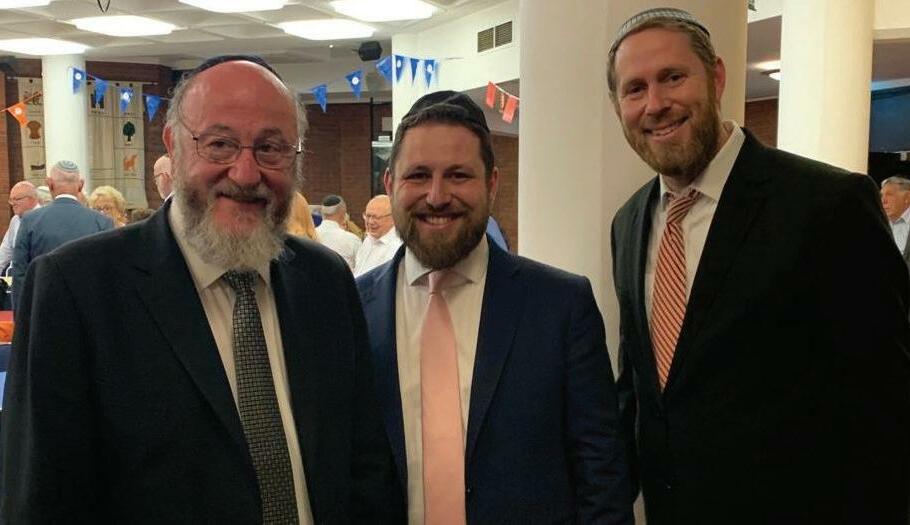
He stated how happy he and Rebbetzen Abi were to be in Pinner and how much she supported him in his work. For example, he said that whenever a congregant asked him a question which he was unsure how to answer, ‘he always knew where to find Rebbetzen Abi’.
Rabbi Kurzer then talked about the idea about a “Growth Mindset” inspired by the research of Dr. Carol Dwek and her colleagues, A “Growth Mindset” means that we are open to improving our knowledge and skills by constantly striving to improve and not just accepting that we are in a fixed state and cannot grow. Rabbi Kurzer said that he wanted to take Pinner forward using the idea of a Growth Mindset so that everyone can add to their knowledge by further study and a willingness to try out new and emerging ideas.
Pinner’s Chair, Lisa Olins presented the Kurzers with a beautiful challah board, with a suitable inscription celebrating the occasion.
The evening was a wonderful and appropriate end to the ShabbatUK which we celebrated so meaningfully here in Pinner.
 Chief Rabbi Mirvis, Rabbi Kurzer and Rabbi Jesse Horn
Chief Rabbi Mirvis, Rabbi Kurzer and Rabbi Jesse Horn
13 | Rosh Hashanah 2022 Community Matters �
Our N’shot Chayil
by Marion Siskin
Both of our N’shot Chayil are excellent ambassadors for Pinner Shul. They both cited the friendliness as one of the main reasons that they got drawn in to becoming active in the shul. Importantly, they have young children who enjoy coming to shul.
Elizabeth Singer grew up in Kenton, where her parents were members of Kenton Shul. Although she married a Pinner boy, Michael, their early married life was spent in Kilburn so they could be close to the West End and work.
Having studied languages at Birmingham University, Elizabeth entered the world of finance, training with Deloitte to become a Chartered Accountant, moving into industry to become Financial Controller for an investment management firm. Currently on a short career break, she is looking to return to the world of finance.
When Elizabeth and Michael looked to move to a place that was more suitable for a young family, they were torn between Finchley, Willesden and Pinner. Fortunately for the shul, they chose Pinner, having the connection of Michael’s parents and the fact that they had been married by Rabbi Grunewald. She felt that the shul was immensely welcoming and took her daughter Ayda to the children’s toddler service. She loved the format of the services, with lots of rhymes and repetition, and more importantly, so did Ayda. Elizabeth felt that the comparatively small scale of the services was a bonus, in that shy young toddlers would not feel intimidated and feel able to join in. It was not long before she was part of the rota to take the service.
Before having her children, Elizabeth volunteered for the security rota. She attended the training and met a number of members. One was particularly welcoming, which she took it as part of ethos of the friendliness of the shul. The result of that conversation with Jonathan Mindell, then Chairman, was that she was invited to be the sixth member of the steering committee to select the new rabbinic couple, our very own Rabbi and Rebetzen Kurzer. Elizabeth had fulfilled all the criteria they were looking for – under 40, female and with a young family. She said she felt it was an amazing honour and was proud to be part of that process, which she found interesting and fascinating.
Elizabeth served for a year on Pinner Shul Council and may return when her children are a little older.
As a parent to young children, Elizabeth became a member of New Generation and was invited to join the committee, becoming co-chair with Judith Moore in 2018.


Her daughters Ayda and Esther enjoy the activities, mainly centred around the chagim. Elizabeth said that the dynamics of NG changed with the arrival of the Community Directors, Sara and Yonatan and is full of praise for their enthusiastic and imaginative input.
Elizabeth’s passion for the languages she studied at university, particularly Spanish, still remain and she enjoys visiting the country and practising her skills whenever she can. In the meantime, she is very proud of recently gaining Grade 1 in tap dancing.
Currently Judith and Elizabeth are co-chairs of NG with Philippa and Amy Kay as the other committee members.
Philippa Gerrard was also a comparatively local girl, having grown up in Canons Park and been a member of Stanmore Shul. While studying teaching and history at Reading University she lived at Hillel and became part of the community there. She enjoyed the intimacy and warmth of a smaller shul, having been used to a much larger congregation. Philippa started teaching straight after Reading and having moved through a couple of schools, has been at her present post since 2009 where she loves working with primary age children.
When Philippa and her husband Michael, who grew up in Totteridge, moved to Pinner having lived previously in Stanmore, one of the attractions was PJK for her older daughter Lily, who had attended the nursery. By the time they moved to Pinner, Lily was attending Moriah School. However, they started going to the children’s services and very much enjoyed them. Once again, she liked the intimacy of a comparatively small group of children who could participate in the activities and her daughter enjoyed attending too. As with Elizabeth, she soon joined the rota to lead the services, her teaching experience being put to good use.
Philippa joined New Generation. She enjoyed meeting other parents from Pinner and beyond. She spent a year on the committee, but took a break to have her daughter Sadie and was invited to return, which she did very happily. She was also full of praise for Sara and Yonatan, the Youth Directors. There is a very close link between them and
Elizabeth’s passion for the languages she studied at university, particularly Spanish, still remain and she enjoys visiting the country and practising her skills whenever she can
❝ ❞
14 | Rosh Hashanah 2022 � Community Matters
❝ ❞
Most importantly, Philippa’s girls enjoy going to shul and make sure that mummy comes with them. She feels that their pride in being Jewish and their love of religion will last them a lifetime..
New Generation, and Philippa feels that they have some very innovative ideas and are especially good at initiating crossgenerational activities and engagement. Most importantly, Philippa’s girls enjoy going to shul and make sure that mummy comes with them. She feels that their pride in being Jewish and their love of religion will last them a lifetime. Philippa believes that the positivity of the Shul and its leadership contributes greatly towards the friendliness of Pinner.
Despite working, having a young family and volunteering at shul, Philippa enjoys gardening and loves baking. She is hoping that as the girls grow up, she will be able to engage in shul life in other areas. For the future, Philippa feels that Pinner is a very friendly place and she and her family are very much part of the community.
It is heart-warming to know that newcomers are welcomed into Pinner Shul and that they are taking part in activities and the life of the Shul. Children and young families are the future of Pinner and it is encouraging that even without the attraction of a mainstream Jewish primary school, there is much we have to offer.
Our Current Council
Lisa Olins – Chair
Jeffrey Samuels – Vice Chair Martin Grossman – Warden Dee Beth – FR
Anne Erdunast – Women’s Officer
Council of Management Sophie Epsley David Jay Jon Sober Zara Spilka
Meet our newest Council member
A profile of Sophie Epsley
by Marion Siskin
Sophie Epsley (nee Conway) comes from a family that have always given back to their community. A true Pinner girl, Sophie went to cheder and school locally and still lives in the heart of the village.
Her current work is as a senior project manager within sports inclusion, which means that she has a range of skills that she can bring to the Shul Council. She works for an organisation that encourages young people of all abilities to join in sporting activities for the social, fitness and well-being benefits that it brings.
Although she was never far away from her Jewish roots and way of life, Sophie says that she re-engaged more fully after her first visit to Israel for the Maccabiah in 2017, where she was a tennis coach. She really enjoyed her marriage enhancement classes with Rebbetzen Abi before her wedding last year and partook in the eight week ‘Reframe’ course at Mill Hill Shul, run by the assistant rebbetzen there, where she met a variety of women with diverse beliefs.
It therefore took little persuasion by Anne Erdunast, our Women’s
Officer to encourage Sophie to join the Shul Council. Very much a ‘people person’, with experience in a range of organisational skills, budget management, fundraising and working with people of all ages, abilities and faiths within the wider community, Sophie has a lot to offer the Council, despite her comparative youth. She is a fresh (if not unfamiliar) face that will offer a new perspective.
Sophie hopes to be able to empower people to return to shul after the many difficulties that Covid presented us with. She is looking forward to taking responsibility for her own projects and putting forward her ideas for consideration.
Outside of work and her commitment to the Shul, Sophie and her husband Simon enjoy all things sport related, both playing and watching.

15 | Rosh Hashanah 2022 Community Matters �
My Favourite Colours
An update on Pinner’s digital strategy.
A few years ago, I attended a conference run by the United Synagogue during which there was a discussion about the difficulties in persuading congregants to volunteer for various groups. I was told (and soon after found it to be very true) that there is only one group for which almost everyone considers themselves to be the perfect candidate and for which, all the time constraints suddenly appear to instantly vanish! This is the group to select the new communal Rabbi!
 by Gerald Isaac
by Gerald Isaac
However, I have recently discovered that there is another area where many people feel that they are ideally suited to contribute – this is the field of colours, fonts and design, when related to the shul’s website, logo or other graphic identity. In parallel, there is, as usual, a huge amount of passion and emotion that accompanies any shul initiative, particularly when that may involve any element of change. Having said this, in an honest attempt to at least please some of the people some of the time, I will try to explain what we have tried to implement for the first stage of the digital strategy for our community.
Together with numerous professional subject matter experts (ranging from graphic design, branding and social media marketing to security, proof reading and user experience) and of course our chosen web agency, we have developed a site that is intended to portray the many positive aspects of our community, not only for our members but also (and perhaps, more importantly) for those outside of our community who are curious about us or indeed may be persuaded to join us. The aim has been to provide a platform which can be used to provide a virtual ‘shop window’ into our community, exhibiting the wide range of social activities, educational events and ongoing welfare provision, in addition to the range of religious services that we organise and host every day. In parallel, the website aims to be a ‘one stop shop’ for our members, who can use it to find service times, communal information and updates as well as make online donations and register (and pay) for events through a simple, user-friendly interface. The new site fully supports a communal calendar, with associated event booking and payment functionality as well as enabling download of specific calendar appointments. However, due to security considerations, we will not use the site to publicise future events and will rely on other communication channels with our
members to relay that information so that they can use this functionality through private links.
The site’s menu structure is built around the ‘Inspire, Care and Connect’ vision of Rabbi and Rebbetzen Kurzer, and for the more ‘traditional’ user, there is always the search facility at the top right of the screen that will allow you to search for specific words. The Inspire, Care and Connect graphics, fonts and colours have been used throughout the site, although you will also see the Pinner Synagogue and United Synagogue logos in the footer section of every page. Furthermore, on every page, you will see an accessibility icon (a green icon on top left of the page) – this will allow you to change contrast, font size and background to aid readability.
One of the major challenges has been to make the site ‘responsive’, ie to detect your phone/ tablet/ laptop/ desktop’s screen size and orientation and change the layout accordingly. The immediate reaction to solving this problem is to have one size to fit all and simply ‘crop’ the page but consider the example below and hopefully you will understand the challenge.
Going forward, the intention is to use the site to facilitate automated generation and distribution of our weekly Shabbat leaflet as well as allow us to streamline many processes that are now manual. A good example of this is the Yahrzeit Reminder email, which we can revise so that you can click on links to

16 | Rosh Hashanah 2022 � Community Matters
register that you will be attending a service and to request that a memorial prayer is recited. As we are sending you the reminder, we can work out (and tell you specifically) what time the services are that day, whether we are able to recite a memorial prayer on that day and when you should (or should not) light the candle. You will also be able to click on a link to donate online - all of this without reaching for your pen, your cheque book, an envelope and a stamp!
I’m sure that there are some who will have issues with the colours, the order of the words, the images or the spacing between them, but I sincerely hope that you will find the content of interest. The site will change every day and we are relying on YOU to provide updated content whenever anything occurs that will be of interest to our members, and indeed anyone who may visit the site. Ultimately the success will depend on your updates – please help to make it a success and a website and community of which we can all be very proud.
A few brief updates on other elements of the digital strategy
⁕ We have successfully launched our @pinnershul Instagram account that has almost 300 followers as at the end of July. This continues to provide updates on what is happening within our community - you can also view the latest posts on the home page of the website.
⁕ We have launched our own Vimeo channel to host @ pinnershul videos – see the link at the bottom of every page, as well as a link to our Facebook page, @pinnershul.
⁕ We are exploring ways to ‘standardise’ the flyers/posters

that are produced for shul events, allowing for a more consistent and professional look and feel, using a standard tool such as Canva.
⁕ Regarding streaming of live events, during the last year (perhaps unsurprisingly, due to the sudden global need to allow for collaborative working and remote participation) technology has progressed significantly. Simultaneously, most people have moved forward in terms of their familiarity with software such as Zoom and Teams and this has allowed us to expand our horizons and to evaluate new options that will make it easier to facilitate high quality hybrid events. Many lessons have been learned during hastily arranged Zoom sessions, with handheld cameras and phones, as well as unmuted participants! We are currently defining a solution that will allow events to be streamed live (and recorded) so that those who are unable to be physically present can observe, and ideally participate, by interactively providing feedback and asking questions. We aim to provide for a standard configuration/ setup of this equipment to allow basic use without the need for specialist technical knowledge, thus allowing streaming of an event to a page on the shul’s website with negligible setup effort, and possibly an upgrade to the existing infrastructure at 1 Cecil Park.
Editors’ Note
By the time you read this article, the website will have been up and running for a few weeks. We would welcome your constructive feedback or suggestions, so do get in touch by clicking on the ‘Contact us’ or email links at the bottom of every page, which will help the team in their future work.
17 | Rosh Hashanah 2022 Community Matters �
It


s where our heart is
Israel today is resilient and prosperous; however, many Israelis sadly do not share in its prosperity. Without our intervention, the gaps in Israel’s society, between those that have and those that do not, are only going to widen.
UJIA invests in support for young Israelis living in the social and geographical peripheries, where there are fewer high-quality educational and developmental opportunities, resulting in reduced life-chances. Additionally, through our initiatives, Israelis from minorities and disadvantaged communities are able to find quality employment opportunities, which in turn provides sustainability to their families, local communities and wider Israeli society.


To support the work of UJIA in Israel this Kol Nidre and be part of building a home where every child has the opportunities we would want for our own, visit ujia.org/kn22

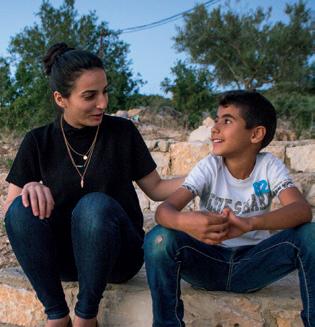



ujia.org United Jewish Israel Appeal is a registered charity no. 1060078 (England & Wales) and SC 039181 (Scotland).
’
The Journey Home 18 | Rosh Hashanah 2022 � Thoughts & Perspectives
Ask a Busy Person……
by Marion Siskin
It has been said many times that Pinner Shul flourishes because numerous individuals give of their time freely and generously. There is also the cliché that if you want something done, ask a busy person. Both of these apply to Shereen Presky, who is stepping back after serving in a range of capacities within the Shul for 31 years.

Shereen, who grew up in Arnos Grove, started her working life at Rimmel Cosmetics as a junior secretary to the Managing Director. She remembers her as a very determined and hard-working boss, who acted as a mentor to the young Shereen. She worked there for four years and from there moved on to an advertising company.
Shereen married Nigel in 1985 and joined the family printing firm a year later. Nigel has always dealt with the technical side of things, while Shereen is client facing and all things administrative (she has a reputation as a formidable administrator). As a team they have always recognised that the world of print is a constantly developing one and have moved with the times to ensure the success of the business.
Just before their son Adam was born, Shereen and Nigel moved to Pinner from Harrow Weald and joined Pinner Shul. Adam started to attend Gan Pinah. From there Shereen got to know other young mums and became friends with them. It didn’t take long for her to become involved with the running of the nursery and became Chair of the Parents’ Association. After the Gan closed Shereen, along with Avelyn Hass and Sonya Daniels z”l, were instrumental in setting up PJK.
As soon as women were permitted to serve on the Executive of United Synagogue shuls, Shereen took her place. In the early days she served with Helen Levy and Suzanne Jackson. Helen had encouraged Shereen to partake in community life. She has served with many Chairs of the Executive, acting as Vice Chair to Howard Lewis, Howard Freeman, Jonathan Mindell and most recently Lisa Olins, helping to steer the Shul through the very challenging years of Covid. She was also co-opted onto the Executive a number of times. She has very much enjoyed supporting the people who ‘run the Shul’, perhaps not realising that she was, of course, one of those people.
Shereen found the Shul to be a very non-judgemental and inclusive, ready to come and work together in a crisis. One of her many skills is remembering people’s names and one of the pleasures of being on the Executive was getting to know members of the Shul.
For Shereen, the highlight of serving the Shul came with the first ShabbatUK in 2015, when with Debra Levin and their team, they delivered an outstanding range of activities that brought many people to shul that hadn’t attended for a while. It was acknowledged that Pinner put on one of the best in the US and Shereen herself commented ‘Being involved…was so very special. The many hours we spent,
meetings we held and hundreds of emails we exchanged in the run up to ShabbatUK was worth every minute just to see our members laughing, singing, socialising, making new friends and greeting old friends. The feedback…has been just unbelievable. This was Pinner at its very best’.
Shabbat UK had another resonance for Shereen and Nigel. They decided that they would try to keep Shabbat together. As she recalls, they didn’t go from ‘zero to hero’ but they very much enjoyed the new regime and the opportunities for socialisation it gave them. Several years earlier, Shereen, who grew up in a non-observant household, had made the decision to improve her Jewish knowledge and had asked her good friend Sonya Daniels z”l to mentor her. That legacy is still with her today.
As Shereen ‘retires’ from Shul life, she realises that there are still many challenges in the post-Covid era to be faced, but as she says ‘Pinner does things well’.
As well as the Shul benefitting immensely from Shereen’s immense contribution, she and Nigel have gained from their own spiritual journey. She is proof that no matter what your background, you can make a difference to Pinner Shul. And for that, we thank you Shereen.
The last few years have seen her children, Adam and Gemma married and the arrival of much-loved grandchildren. Shereen plans to spend more time with the new generation, but we feel that she will not disappear completely from shul life.
19 | Rosh Hashanah 2022 Community Matters �
These are just some of the things with which Paperweight can help. For the full list please visit our website. We’re here for you 24/7.


In the growing Israeli Druze town of Julis, Magen David Adom UK is building a station that will house an ambulance together with a team of medics. More than that, MDA Julis will provide jobs and volunteering opportunities for a community living on Israel’s social and economic periphery. What started as a simple dispatch point is now something much, much bigger.

In any community, building a Magen David Adom station not only saves lives, it changes them too.












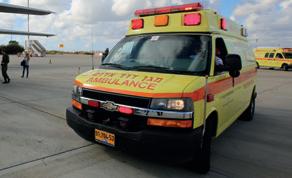



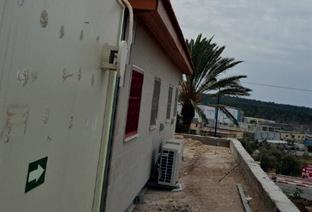







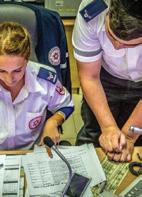









To support our work in Julis and across Israel call 020 8201 5900 or visit mdauk.org/build With your help we will save more lives.







Registered Charity No. 1113409
THE UP GROUND FROM LIVES SAVING 0330 174 4300 info@paperweight.org.uk paperweight.org.uk The A-Z of Paperweight...
Y Yarzheit Z Zzzzz A Advocacy B Benefit appeals C Court procedures D Debt E Employment F Family law G Guidance H Housing I Immigration J Jewish heart K Kindness L Landlord tenancy M McKenzie friend N National insurance O On top of the situation P Probate Q Quality service R Redundancy S Safe T Tribunals U Utilities V Victimisation W Welfare X Xtra PWT_093 A-Z_Pinner United Synagogue_176x128mm_v1.indd 1 12/07/2022 14:05 � Thoughts & Perspectives 20 | Rosh Hashanah 2022
We three caretakers - taking care
When we arrive at Shul, the chairs are set out. When we’ve enjoyed a kiddush, there is someone to wash up. We owe a debt of gratitude to our team of caretakers, led by Florin. He and his team told us their stories.
My name is Florin Amariei and I was born in Romania in 1976 in a little town called Roman in the north of the country. I grew up in a family that loved G-d and always inspired me to talk about G-d and my faith in Him. Growing up, I understood that this was an act of courage, considering that the period 1970-1989 was a very difficult time for our country under the communist dictatorship of Nicolai Ceausescu! I learned about G-d in the children’s group of my church and looked to my mother who translated the Bible throughout her life! From her I inherited the love of books, history, G-d, and the desire to help others and serve their needs. When it came to making choices, I enrolled at the University of Theology ‘Emanuel’ which I finished in 1996.

In 2004 I married Otilia, my wife and we are grateful for 18 years of marriage. In 2006 we moved to Milan where we lived for the next ten years, and where I was involved as ministry in the Maranatha Baptist Church - until we decided to go to Londra! In 2017 we moved to Pinner and the Roumanian church here asked us to serve them and teach them the Word of G-d. I worked as cleaner, traffic marshall, and in security in different locations in London until 2019, when I heard about a possible job as a caretaker at the Pinner Synagogue. I presented myself for an interview with Edna Terret and Vasile, the senior caretaker. To my surprise I was accepted as caretaker and after another two years I was promoted to senior caretaker! When I'm not involved in the synagogue or church, I enjoy music, and like to read history books, biblical studies, science, counselling, and family books. I like to walk with my wife through the gardens and parks of London, and to spend time with our two nephews Adorian and Emanuel and our three nieces Ruth, Abigail and Damaris.
I want to finish by saying thank you to the Executive, to the Chair Lisa Olins, my manager David Jay, to Carolyn Abrahams as well as to everyone from Pinner Synagogue for giving me their support and trust. Thanks to Addi and Robson for the opportunity to meet them and work together like a team!
Hello from Robson
I thank you guys from Pinner Synagogue for this opportunity to tell you about me. My name is Robson Renato De Souza, and I am a Christian born in Brazil in the state of Minas Gerais. I arrived in this country in 2002, and worked for Royal Mail for four years. I started working here because my ex-wife’s cousin used to work here.
I always liked to work. For me it doesn't matter if the work is light or heavy. Today, I am a mechanic, which was my
dream. I am very curious to learn things, so when I saw some things that were faulty, I wanted to fix them – even the bimah. I talked to my supervisor Florin when I saw that something was wrong, until we saw that the wheels were falling apart. We went to drag the bimah which was very heavy. Florin talked with Mr David Jay and with Mr David Summers, so I went to check under the wheels, to get an idea of how to remove them. I saw that this was dangerous, but it was not so hard, so I took four bottle jacks and one jack flat. I lifted the corner of the bimah and very carefully I put the flat monkey under the bimah. Then I lifted each corner and put a piece of wood under it until it was safe to be able to change the roses. Mr Jay was there all the time to help me to get the job done. So, I do a bit of everything and I always enjoy helping someone.
Hello from Addi
My name is Godfred Addo Danquah and I was born and raised in Ghana. I came to the UK in the year 2019, for a family reason and also just to study in the UK. I am very kind, passionate, hardworking, confident, and active and I live a healthy life style. My hobbies are playing video games, reading books, and listening to music, keeping fit, and playing tennis. Thank you - this is what I can say about my story.
21 | Rosh Hashanah 2022 Community Matters �
Volunteering for Leket in Israel a different opportunity
by Jane Leaver
During Chol Hamoed Pesach this year, and as part of visit to Israel, Brian and I decided to pay a visit to the new offices and central facilities of Leket Israel, located in Ra'anana, to offer our services as volunteers.
On previous visits, we had sorted incoming vegetables in their older and
much smaller premises and had helped to serve their rescued produce at a busy soup kitchen in Dimona, together with helping to pack meals ready for distribution to various locations in Jerusalem.
This time, though, we declined to pick produce in the fields with the excuse that it was too hot for us and we don't bend so flexibly anymore! Instead we were directed inside the huge warehouse to sort, with about 50 other volunteers, a consignment of celery. I estimated that the load would have arrived in at least one huge container lorry. Two or three hours later, I thought it was at least two container's worth of celery that we were dealing with.
The celery had been destined to be exported to Russia, but because of the war in Ukraine, the export was embargoed.
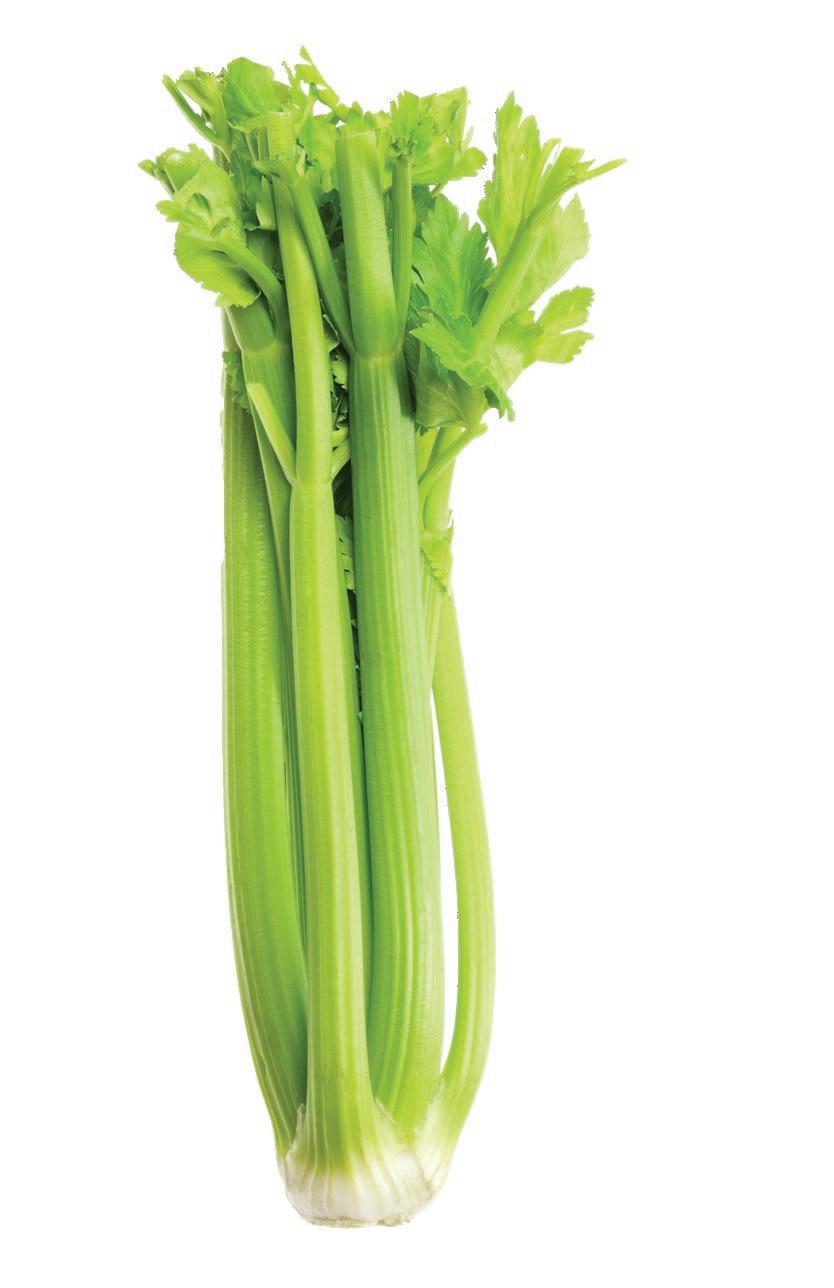
The loads had stood, ready packed in green plastic bags, since before Pesach, with no foreseeable destination and was now in danger of rotting completely in the heat. Leket had acquired the load and the race was now on to salvage as much as possible.
We were given disposable gloves and instructions to take each packed head of celery and without opening each pack, to decide whether it was wet inside, was soggy to the touch and if black or blemished leaves and stalks were visible. Also, we needed to be as quick and efficient as possible. All damaged produce was then passed to other teams who opened the packs, disposed of the bags and threw the contents into huge bins which would later be sent for animal feed or compost.
The ‘good’ packs were neatly and carefully repacked into boxes and would later be distributed to individuals and organisations for consumption or cooked as soup as part of Leket's new policy of using surpluses as comprehensively as possible.
We soon got the hang of the job and got on with it, encouraged and made welcome by the other volunteers. Our new friends included two ladies who volunteer there regularly, twice a week. One lady is 93 years old and her assistant is 89! They love coming to work there. It's part of their regular activity and social life and they have no plans to retire.
At the other end of the age scale, there were young children and their parents, possibly a school group and a group of 30-somethings wearing tee shirts with their corporate logo. They were having a great time and working really hard and one of them told us, in perfect English of course, that he was very happy to help, because he had organised his boss to have the dirtiest job of all - emptying the rotting celery into the bins!
It was quite tiring work, and we were not too sorry when our taxi came to take us back to Tel Aviv. As we got into the cab, the driver, hand on heart, thanked us for coming such a long way to ‘help my country’. He wished us a pleasant stay and hoped that we would come back soon. Only in Israel!
FOOD FOR THOUGHT
THIS ROSH HASHANAH
Food prices in Israel have risen at an unprecedented rate in the last year
The increase in food prices is a staggering 57.2%. This will put even more pressure on the families that we help. Now even more families will be coming forward for us to help feed their children whilst in our care. These children come from extremely low socio-economic backgrounds and they rely on this one hot meal a day.
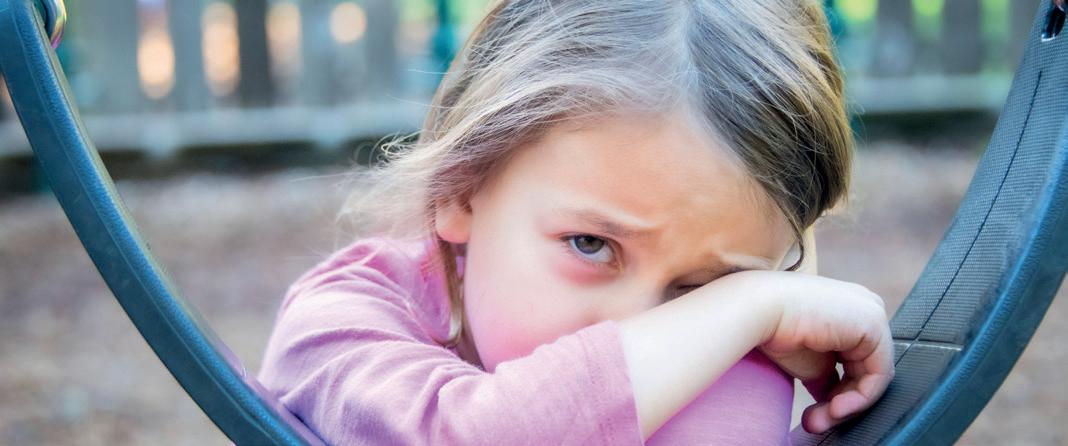
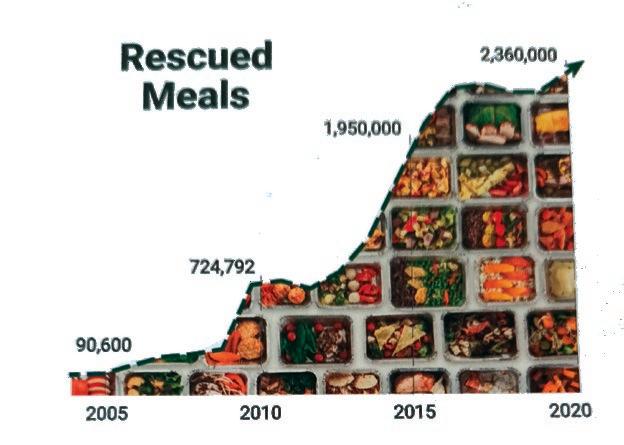
Please donate today to help run this essential programme which costs over £100,000 a year.
Donate now at www.emunah.org.uk /donate or call 020 8203 6066.
British Emunah
on
Registered
charity number 215398 22 | Rosh Hashanah 2022 � Community Matters
Gesher School's Summer Fete
Gesher School was welcomed to their new home in Pinner last September. Their Parents and Teachers Committee, headed by Lucy Hass and Nigel Rose, have organised the school fete for years, but this time, in their new Pinner home, Pinner Synagogue took part.





Pinner and Gesher families alike enjoyed a wonderful, sunny afternoon with children’s entertainment, arts & crafts, great food, and more. Pinner Synagogue organised an Israeli themed stall at the fete. Run together with a handful of Pinner Youth, the stall proved really popular, with families returning again and again to win Jewish Tombola prizes, guess the cities on the map of Israel, and paint some blue and white creations.
We were delighted about the opportunity to be a part of Gesher’s Summer Fete which was a fantastic success. We look forward to working collaboratively with Gesher in many future events. Next, we are arranging a pre-Rosh Hashana event, together with Gesher for children to learn and explore the wonderful world of bees and honey.
Sara & Yonatan Levin, Pinner Synagogue’s Community Directors
Pinner Community Directors Sara & Yonatan Levin, with Heads of Gesher PTC, Nigel Rose & Lucy Hass
❞ 23 | Rosh Hashanah 2022 Community Matters �
WHEN I GROW UP I WANT TO BE...
What’s a Jewish Girl from Pinner doing working in Formula 1?
 by Rachel Mindell
by Rachel Mindell
Unless you are into motor sport, you may not know that the majority of Formula 1 race teams are based in England. You might assume that there aren’t many female engineers working in Formula 1 (and you would be right!) As for any Jewish connection to motorsport, it is pretty minimal. So how did a Jewish girl from Pinner get to be working in the Materials department at the Mercedes Formula 1 team?
In answering that, there is actually a connection with Pinner shul……but I am getting ahead of myself! So, let’s start back at St Helen’s School in Northwood, where I developed my interest in motor sports when I was part of the GreenPower Racing team……a group of girls who built and raced electric single-seat cars in competition with other schools. We went all over southern England racing the car in competitions, with the pinnacle for me, driving the car around the Goodwood Racing Circuit.
My real interest was the materials with which we built the car and from there, with my academic focus on the Sciences, Design & Technology, I moved from school to the University of Birmingham where I studied for a Masters in Materials Science. When it came to my final year, my thoughts turned to finding a role after university. My crazy idea was to get hired into a Formula 1 team! And here is the Pinner shul connection: I am not sure how the topic came up but Rabbi Bergson, our Rabbi at the time, heard about my objective and came out with the fact that he knew someone who worked in F1! It turns out that this person had married a member of our community (who also went to St Helen’s School and then the University of Birmingham, but some years ago). Rabbi Bergson messaged Jon and got a near instant response. Amazing!
So, I got in touch with Jon, who worked in the team that is now branded as Aston Martin, based at Silverstone. I went to see Jon and spent a couple of hours with him, including a tour of the factory. There were no immediate vacancies there, but Jon gave me the Materials contacts in each of the teams and I got in touch with all of them. Initially nothing much happened, but then the Head of Materials at Mercedes F1 reached out to me with details of a three-month temporary role in the department, for which I was offered an interview. I leapt at that opportunity and actually started before I had fully graduated. The three-month temporary appointment turned into a permanent one, first as a Graduate Materials Engineer and then with promotion to a Materials Engineer, ending up as the No.2 in the department.
So, what does a Materials Engineer do in Formula 1? I focus on the materials used in all parts of the car except the tyres and engine. The aim is to create the lightest, strongest, most flexible components that help the car to being the best on the grid. My role is to identify materials, particularly composite materials, that can be used in the design and manufacture of the car. At its simplest there are two parts to my role: First, helping in the design of new components, updates and upgrades, as we search for those marginal improvements in performance to provide the drivers with the best possible car. However, the other part to my role is troubleshooting the issues that have been created on a race weekend – a failure of a component, the results of a crash and the like. There is nothing quite as satisfying as discovering what was the reason behind a failure and putting it right again.
In answer to the question on most people’s lips – No, I do not go to the races, at least not for work. My work is primarily in


If you would like to feature in a future edition of Career Stories email
admin@pinnershul.org
CAREER STORIES 24 | Rosh Hashanah 2022 � Community Matters
the factory and particularly in my laboratory, using quite expensive precision equipment with which to examine materials. But I have been to the races at Silverstone, our home grand prix, and I did go to Austin in Texas before Covid, for the US grand prix race.
It may sound like a very glamorous role, and it is great to be able to read and see the output of my work in the media each week across the season. However, for me it is the benefit of working at the leading edge of advanced materials technology that gives me a buzz, as well as the satisfaction of discovering
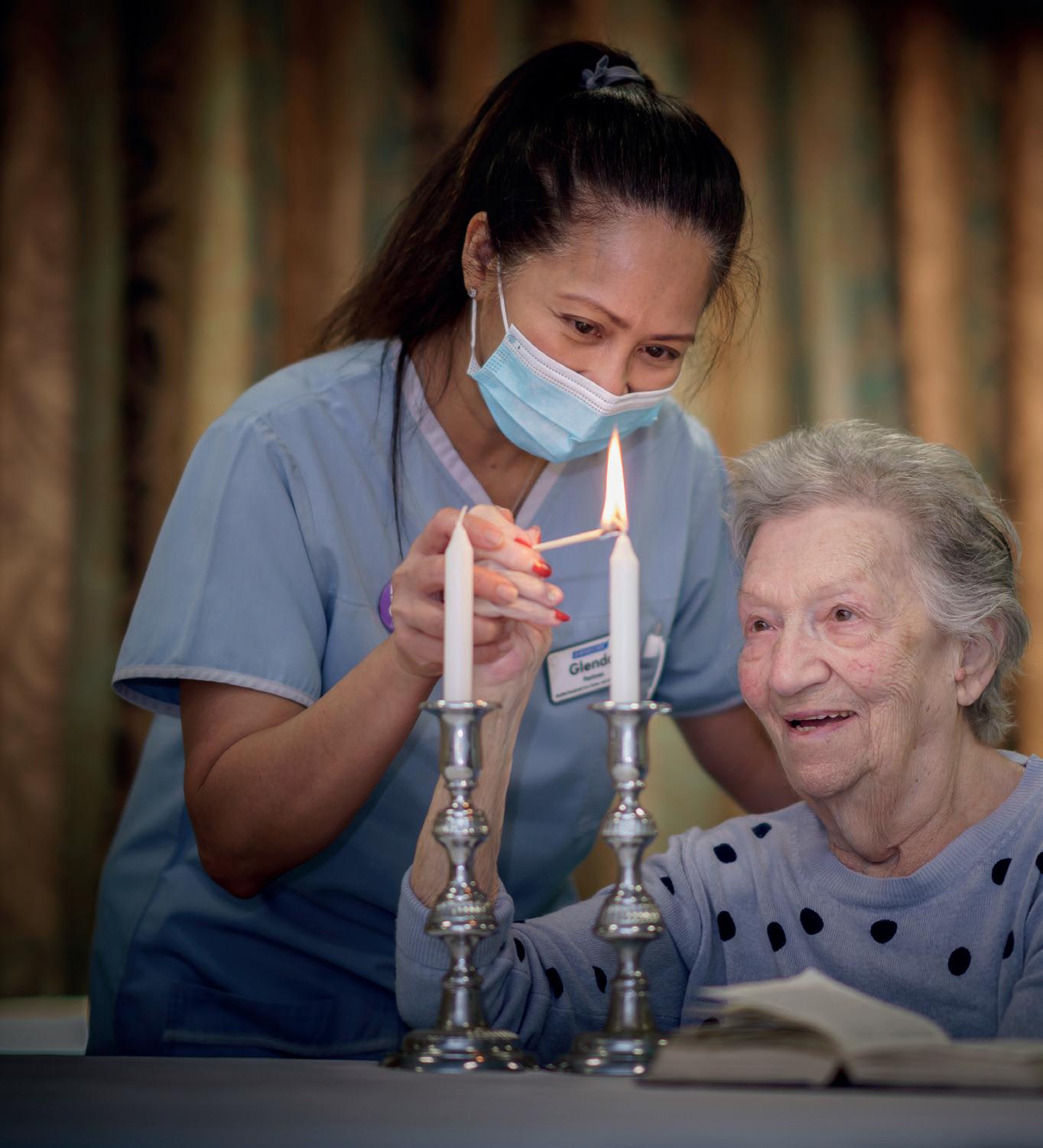
why things have gone wrong and contributing to the gains we have been able to achieve on the track. Of course, it is fun seeing and working with the drivers who are presented as the stars of the show – being around Lewis Hamilton, Valtteri Bottas and now George Russell is pretty cool. However, there are over 1,000 of us working together to put Mercedes F1 at the top of the grid over the last five years. It is even cooler to know that I have made a personal contribution to the team’s success, which has been acknowledged.
Formula 1 is not everyone’s cup of tea. Some people cannot see the point of cars going round and round a racetrack multiple times, in a not too environmentally sound manner! However more than 400,000 people went to Silverstone over the race weekend this year and there are many passionate motor racing fans around the world – and here in Pinner, where Rabbi Kurzer is arguably the community’s No. 1 fan!
I can’t see myself working in F1 forever, but it has been a brilliant start to my career. Some things have moved quickly, but equally some things have stayed much the same. Five years on from when I started this journey, I am still one of a very small minority of women in Formula 1 and a miniscule number of Jews across the sport as a whole. Lewis Hamilton has been a leading voice for greater diversity in our sport and perhaps in a small way I am making my own contribution to that diversity too.
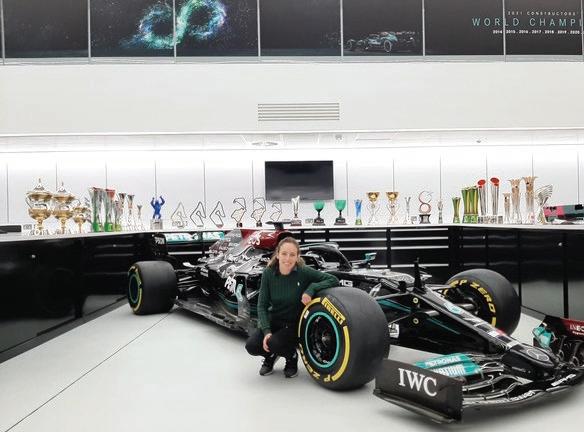
Shabbat
Charity Reg No. 802559
is shared. Home is where... care homes • retirement living • At Jewish Care, we know what’s important to you and your loved ones. It’s not just the very best level of care in a warm and loving environment. It’s the Jewish care. The values, sense of community and traditions that are so important to you and are no less important to us too. Home is where you live. Home is where we care. To find out more, please call 020 8922 2222, email LWJC@jcare.org or visit jewishcare.org Home Campaign Adverts JC 128.5x176mm.indd 1 25/07/2022 16:3125 | Rosh Hashanah 2022 Community Matters �

22 Upper Woburn Place, London WC1H 0HW www.freemanssolicitors.net Contact Howard Freeman / Nathan Woodward Stephen Sasto / Rebekah Gershuny Our Services Include: Family • Litigation/Dispute Resolution Crime • Immigration • Employment Residential/Commercial Property HMO Investigations and Prosecution Wills • Probate • Lasting Powers of Attorney Call us now on 020 7935 3522 This firm is authorised and regulated by the Solicitors Regulation Authority - SRA No. 668114 (www.sra.org.uk) ‘Freemans Solicitors’ is the trading name of Freemans Law LLP which is a limited liability partnership registered in England and Wales (with number OC 426561)
Siddur Lakol – A Siddur for Everyone
by Sarah Sultman
A new groundbreaking siddur which aims to make Shabbat accessible to people with disabilities has been produced in partnership with JWeb, working in collaboration with Gesher School and Kisharon and with the endorsement of Norwood and Langdon. Called Siddur Lakol, ‘A Siddur for Everyone’, you can read about it in this article by Sarah Sultman, Co-founder of Gesher School.

Last June, Gesher was delighted to welcome Chief Rabbi Mirvis and other guests to a very special Chaggigat Siddur. As the school’s patron, he visits regularly, but this visit was particularly wonderful as he handed out signed copies of the new Siddur Lakol to every child during a morning assembly.
Chaggigat Siddur is very much a rite of passage in our community schools - a junior coming of age experience. I can remember my own in 1984, aged eight, when I decorated my blue Singers siddur with watermelon stickers and pieces of felt. I can remember the colourful shiny wrapping paper we selected to cover my daughters’ new siddur. This ceremony continues to this day, when children having learnt teffilot in the classroom are given their own siddur. It is a statement from the older generation to pupils that says: ‘Your prayers are yours and relevant to you, G-d is there for you to have a relationship with, and you have now reached an age when it is yours to own’. I still have my Singers siddur with the watermelon.
At Gesher, pupils are aided in their communication learning with widgits as part of PECS – the picture exchange communication system. For those unfamiliar with the term, widgits are symbols which we use everywhere. Examples are road signs or signs in public spaces, highlighting everything from danger to cafes and toilets. Airports use them because they are universal – a sign or a picture can be communicated quickly and simply to anyone. For those with communication and learning delays, widgits allow them to understand the information being presented, especially when they are used alongside PECS which involve the physical exchange of pictures.
All children universally start their learning process with pictures and symbols, with the anticipation that in time they will transfer to the written word and no longer need pictures to help their understanding. But for those with speech and language delays and learning difficulties, that timeline can be a lot longer. And for some, written words will never be an accessible route to understanding.
Siddur Lakol, is the first prayer book of its kind. It is a thoughtful, inclusive prayer book that has been designed with the amazing collaboration of community organisations that want to make teffilah accessible to all. Consideration has been given to the colours used and to the font size, making it easier to read. The Hebrew has been transliterated into
English so that anyone can follow spoken Hebrew prayer. But perhaps most uniquely the whole siddur has been fully translated into widgits – symbols enabling the user to fully understand their dialogue with G-d through prayer.
What is beautiful about Siddur Lakol is that it is not just aimed at those with learning difficulties but at all mainstream children. In conversations with the United Synagogue who commissioned this new version we talked about how wonderful it would be if all young children started with this siddur. In this way, once they no longer need it, they will have received their first education in an inclusive way that will enable them to grow into more thoughtful children and adults. For those with learning needs it is the first time they will have had a dedicated prayer book that they can access and engage with. And what about those who do not come to shul regularly, cannot read Hebrew and have no idea of what is being said? Perhaps they too could dip into Siddur Lakol and find that a service begins to hold more meaning for them too.
Prayer provides routine and structure. It is personal, it can be meditative and reflective, it can be joyful and uplifting and it can be comforting. It would be wonderful if Siddur Lakol might inspire other faith-based communities to think about ways of making their own prayer books and resources more inclusive to all. My hope is that the pupils at Gesher treasure their siddur in the same way as I did mine, and that all their prayers be listened to and answered.
Siddur Lakol should be available to order for schools, shul and families from September 2022
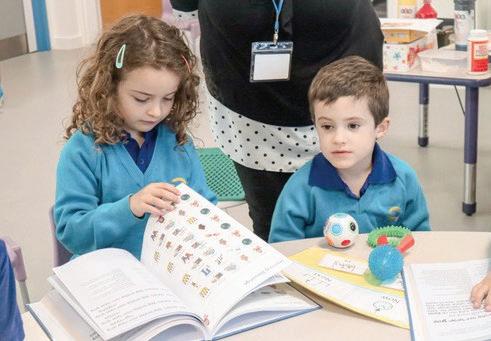
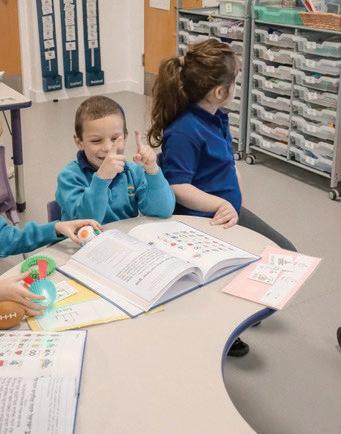
In memory of Sonya Daniels z''l

27 | Rosh Hashanah 2022 Community Matters �
Kids' Korner
by Sara and Yonatan Levin
Can
spot 10 differences in these two pictures?:
Kids in the Kitchen
Honey Cookies



you
Ingredients: Method: » 3 eggs » ½ cup oil » 1 cup sugar » 3 cups flour » 1 teaspoon baking powder » 1 teaspoon baking soda » Pinch of salt » 3 heaping tablespoons honey » ½ teaspoon cinnamon 1. Mix the dry ingredients together. 2. Add eggs, oil and honey. Mix well. 3. Roll the dough into balls. 4. Bake at 180* for 15 minutes.
28 | Rosh Hashanah 2022 � Community Matters
High Holy Days Crossword Puzzle
Across
1. You blow me on Rosh Hashana: S H_ _ _ _
2 Dip the apple in the: _ _ _ E Y
5 I am a prayer book for Yom Tov: M _ C H _ _ R
8 I am a red fruit with many seeds, eaten on Rosh Hashana: P O M _ _ _ _ _ _ T E
9 Dip the A P _ _ _ in the honey. Down
1 A hut that we sit in on Succot: S U _ _ _ _
3 The holiest day of the year: _ _ _ K I _ _ _ R
4. I am not a lemon, but I look kind of like one. I am found together with a Lulav on Succot: E _ _ O _
6 I am green with leaves on both sides. You shake me on Succot: L _ _ _ _
7 What does Rosh Hashana mean in English? N E _Y _ _
Riddles • Riddles • Riddles • Riddles
I’m a liquid but I’m not water, I’m sticky but I’m not glue, I’m sweet but I’m not melted chocolate, I’m found in a comb but I’m not hair, I’m created by an insect but I’m not a web.
What am I?
Every person at Daniel’s table on Rosh Hashana will get ¼ of an apple to dip into their honey. There will be 20 people at Daniel’s table. How many apples should Daniel buy?

What shape has 6 sides and can be found in a beehive?



_
CrosswordPuzzle
:AcrossShofar,Honey,Machzor,
Pomegranate,Apple
Down:Succah,YomKippur,Etrog,Lulav,
NewYear Spotthedifference Riddles 1.Honey! 2.Danielshouldbuy5apples. 3.AHexagon 1 2 3 4 5 6 7 8 9 29 | Rosh Hashanah 2022 Community Matters �
Team Pinner at the Maccabiah Games
While sport is at the heart of the Maccabiah Games, the experience is far greater than the sport itself. Three of our members share their stories of a trip that was nothing short of exhilarating.

Netball – a sport I love by Emma Izon-Siskin
It is a privilege to be able to represent your country in a sport you are passionate about. Netball is a sport I enjoy playing, umpiring, coaching, and watching. In more recent years I have turned my attention to umpiring. In February 2022, I achieved my Netball Europe A award. This is the highest domestic umpiring award used in England and I joined a group of 75 active A Award umpires, servicing the sport at the highest level.
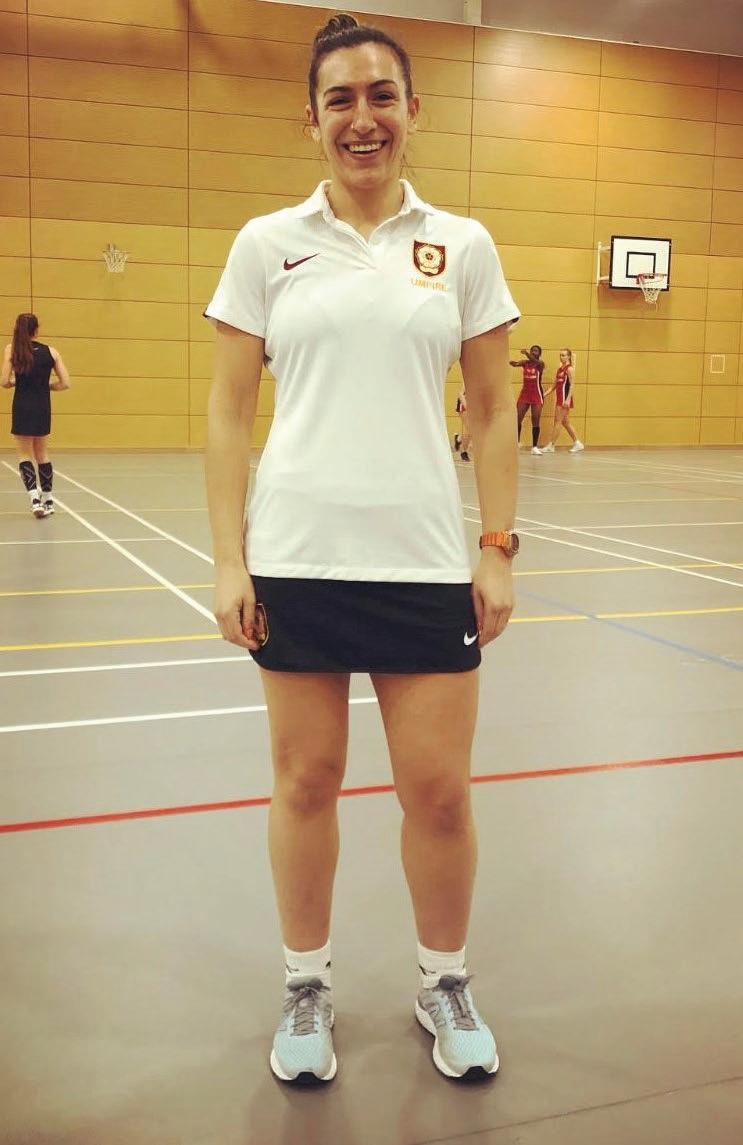
In 2009, my first Maccabiah Games, I played and captained the Great Britain (GB) junior netball team to a silver medal. There is nothing quite like being surrounded by hundreds of young Jewish men and women competing in sport in Israel. It is difficult to describe the pride you feel when you walk out
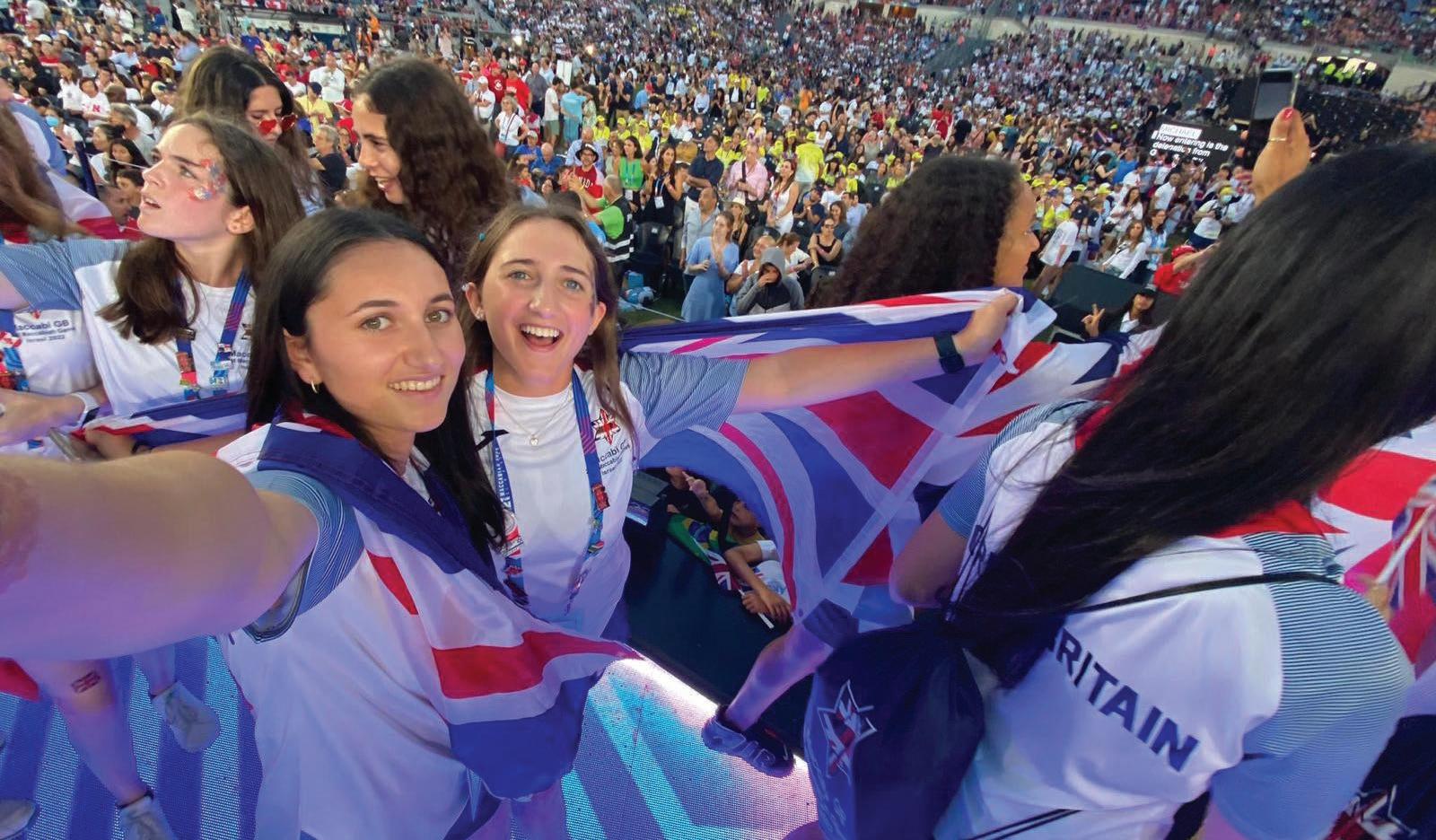
with your fellow GB athletes at the Opening Ceremony, to be greeted by the cheers of thousands. And there is the
opportunity to meet and make friends with people from all over the world. I had an incredible experience on and off the court, so that four years later, the decision to play in the Netball GB Open team as a senior needed little thought. As did the decision the four years following! The Maccabiah Games provided me with the opportunity to play a sport I love, in a country I love, and build lifelong international friendships. To top it off, I also came away with a bronze and silver medal!
In April 2022, I was invited to umpire in Israel for the 21st Maccabiah Games, which was a huge honour. It was enlightening to see the tournament from an umpiring perspective. I saw the talent and skills of the Junior netball U16 and U18 teams, I learnt about the development of netball in Israel and had the opportunity to connect and build friendships with my fellow English
Emma Izon-Siskin
30 | Rosh Hashanah 2022 � Community Matters
and Irish umpires. I look forward to seeing the progression of netball in Israel and I hope to be involved in the next Maccabiah games.
My Maccabi GB Experience
by Zak Davidson
This summer has been an unforgettable experience as I took part in the 21st Maccabi Games in Israel. I was a junior athlete in the under-18s GB Futsal team, winning silver and breaking records to become the first ever futsal team to reach a Maccabi final in Israel.

felt proud collecting my silver medal in front of all our friends and family who had supported us every step of the way.
Being in Israel was special, and my connection with our history was strengthened through Maccabi GB’s Jewish Identity programme - taking part in disability sports at the Beit Halochem Rehabilitation Centre for Israeli veterans, visiting Yad Vashem and the Kotel.
I will never forget the feeling of walking into the Teddy Stadium in Jerusalem at the Opening Ceremony, alongside over 500 GB athletes, young and old, to the cheers of tens of thousands of spectators. For me it was the best feeling in the world!

From the editors
The Jewish Chronicle reported the following:
‘The squad exemplified a never-say-die attitude in their opening game against Mexico and throughout the tournament. The U18 futsal side were the best performing futsal team at the Games, winning silver’
Futsal is a highly technical variation of fivea-side football which originated in Brazil.
The two and half weeks in Israel was the culmination of a year’s training and bonding with my team, both on and off the court. Our connection grew stronger throughout the tournament, and from the moment we took off from Luton we did everything together. If one of us was running late for dinner, the rest of us waited. We were encouraged to go everywhere (within reason) as a team, and this is something I believe helped us play better.
The competition was high and when we played against teams like Brazil - one of the favourites to win the tournament - it was quite nerve-wracking. However, our determination saw us through, winning all our qualifying matches to reach the semi-final against Israel as top of our group. Going 3-1 down in this important game was an anxious moment for us all, but we kept our heads and won 5-4. A personal highlight for me was scoring the fourth goal to take the lead.
Although we narrowly missed bringing home gold, (losing 1-0 to Argentina) I
Tennis and Israeli food –a winning combination by Arianna Sultan
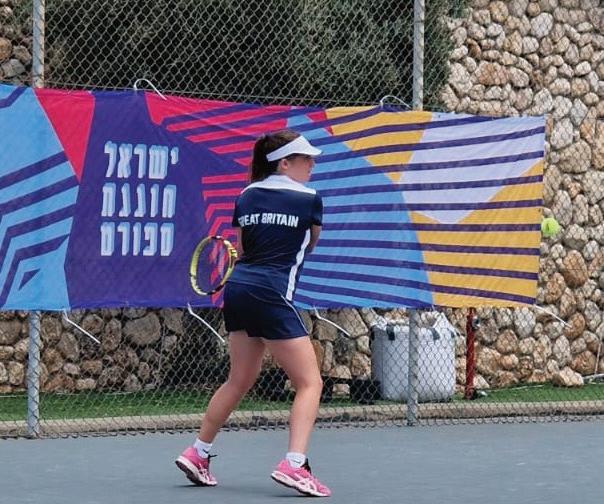
It's no surprise that Maccabiah was the most amazing time of my life considering it's a combination of the two things I love most, sport and Israel. I was part of the GB junior tennis team and between us we faced some amazing competition, including Israelis on their national team, semi-professional Americans and even a junior world number 25. But for me, Maccabiah also meant so much more than just the sport aspect. We went on incredible trips and met amazing people, a big highlight of which included playing sport with wounded veterans at Beit
Halochem. It was truly inspiring to see people who have given so much to Israel never giving up, despite the challenges as a result of their time in the army.
The experience was special even before it started, with the excitement of kit day, the Maccabi fun run and the several tennis trainings and pizza socials with my team before the games. From the moment we landed in Ben Gurion it only got better, and I’ll never forget the feeling of walking through the airport in our GB kit with supporters cheering around us, and later on walking out into Teddy Stadium in front of 30,000 spectators including Joe Biden and the Israeli President and Prime Ministerthere’s honestly no feeling like it.
When I wasn’t playing tennis, I was having the time of my life exploring Israel and making up for the Israel tour that Covid decided to cancel. As well as the countless evening trips to get Golda’s ice cream, we went to a waterpark on the Sea of Galilee, visited the markets in Tel Aviv, went on scavenger hunts around Haifa, and of course spent a day in Jerusalem visiting the Kotel and Yad Vashem, which strengthened my Jewish identity and connection to Israel.
After being adequately filled with shawarma, schnitzel and falafel, the best 16 days of my life came to an end at the closing ceremony. The 10,000 athletes of all ages came together to trade kit, eat even more Israeli street food, watch live performers and mark the end of the 21st Maccabiah Games together. It was an experience I will never forget and I would love nothing more than to do it all over again when I’m older.
Arianna Sultan
Zak Davidson
31 | Rosh Hashanah 2022 Community Matters �
Letter Samech
 Dear Pinner
Dear Pinner
Welcome to the fifteenth in a series on the Hebrew Alphabet, in which we are exploring the meaning behind the Aleph-Bet letters including their names, shapes, sounds and numerical values. In addition, we have seen that the order, orientation and direction of the letters holds much significance.
The fifteenth letter of the Aleph-Bet is the Samech. With this being the Rosh Hashana edition let us also try to connect the letter Samech to our festival season.
 by Simon Hodes
by Simon Hodes
The shape of the Samech is an enclosed circle.
Along with a final mem, these are the only two fully enclosed letters in the Aleph-Bet, and this in itself holds much symbolism.

A circle represents the cycle of life, the seasons, and the world. A circle has no beginning or end - hence it represents infinity - and G-d.

It is said (Exodus 32:15) that the Tablets received by Moses with the Ten Commandments were carved from front to back. Hence, a miracle occurred to hold the ‘centre’ of the letters Samech and final Mem in place (Shabbos 104a).
Some commentators liken the inside of the Samech to Israel, surrounded and protected by G-d, or the Mishkan (the portable temple in the desert years) surrounded by the Tribes. The circle of the Samech represents the wedding band, and the letter Samech first appears in the Torah (with regard to living beings) in the creation of Eve and womankind.
The letter Samech has the numerical value of 60, which signifies a majority (of 100) and also an abundance. There are 60 letters in the Priestly Blessing (Brikat Kohanim). There are 60 Talmudic tractates. Hence Samech alludes to the oral law - whilst the letter Mem hints at the written law, given to Moses after 40 days on Mount Sinai.

The number 60 is significant in Kashrus. If a drop of milk accidentally falls into a pot of meat, the law states that if there is more than sixty times the amount of meat to one drop of milk, then the error is completely nullified.
Sixty is an important number in Jewish tradition. The Talmud Brachot 57b states that ‘Honey is one-sixtieth of manna. Shabbat is one-sixtieth of the World to Come. Sleep is onesixtieth of death. Dreams are one-sixtieth of prophecy.’
The word Samech itself means ‘to support’ or lean upon, and we look up to G-d for support. As mentioned in previous articles some Hebrew letters have ‘solid bases’ and would stand on
their own. The Samech, being round in shape, could ‘roll away’ - an allusion to the support (Samech) we need from G-d. We see Samech in the word ‘Semicha’ - the symbolic act of laying hands on a head to transfer leadership or priesthood in the Torah. The word Semicha in modern times is used for the ordination of a Rabbi.
The preceding letter in the Alphabet is Nun, and when you add the Samech we get סֵנ (Nes = a miracle). Allegorically we lean on G-d for support and miracles.
So how to link Samech to our festival edition?
The word samech ךמס is an acronym for: salach חלס, to forgive; mechal לחמ, to pardon; and kaper רפכ, to atone.
These are of course the three key themes of Yom Kippur. When we strive to forgive, pardon and atone, we will achieve great spiritual healing.
It is traditional to start building your Sukkah straight after Yom Kippur.
The word Sukkah begins with the Samech - depicting G-d’s protection all around us. The next letter Caf hints that our Sukkah can be Kosher with three walls, while the Heh hints that a Sukkah can be Kosher with a minimum of two full walls and a fraction of a third wall.
Wishing you all and your families a Shana Tova U’Metukah, full of Sameach, and a happy and healthy 5783 ahead.

When we strive to forgive, pardon and atone, we will achieve great spiritual healing
❝ ❞
� Thoughts & Perspectives 32 | Rosh Hashanah 2022
Little Bear a Story of Friendship and Fortitude
by Marion Siskin
When our son Daniel was born in 1992, one of the best gifts he received was a cushion with his name on. Obviously hand-made, it was beautifully appliqued and featured a train. The people who had given it to us bought it from a little gift shop near Kingston. We were very taken with it. We looked at the label and found the name and address of the maker, Elizabeth Lord.
When Daniel’s brother Adam was born 18 months later, we wrote to Elizabeth and asked her to make him one. And thus a ‘tradition’ was born. Over the years, we commissioned many cushions (probably about 30) for the babies of friends and family. They were always well received and became a firm favourite for the child and their family and the cushions went to Italy, Israel and the USA as well as round the UK.
In the early days, all communication with Elizabeth was by letter, but as time moved on we also corresponded by email. Sometimes we weren’t in touch for years, but then three or four cushions might be needed within months, and Elizabeth was always happy to oblige. We only contacted her with good news, which gave a positive feeling to the relationship. We knew she was old enough to have grandchildren and that she lived in Devon, but very little else. We really looked forward to receiving the cushions for us to pass on, accompanied by her beautiful hand-written letters. Sometimes there would be a little gift for me – such as a covered notebook or tissue-holder. We even spoke on the phone once or twice; she told me how she had lost her husband, and sadly, her daughter to cancer. It really felt as if we had a connection.
Earlier this year, we asked for a cushion for friends who had just had a very longed-for grandchild. As lovely as ever, Elizabeth described it as ‘GCSE rather than A-level’, though we didn’t agree with her assessment and that this cushion would be her swansong. With it were two letters and a very old and battered bear, Little Bear. In one letter she told us all about her family and we learnt more about her than we had in the previous 30 years.
This was the other letter.
‘In 1953, my husband, baby and I moved to Borehamwood. We knew no-one and I was pleased when an elderly lady, accompanied by a young girl spoke to me whenever I met her as I walked Simon in his pram. The young girl I was told was, in fact, 20 years old, a child of pen-friends the lady had before the war. The young girl always carried this bear, everywhere she went. One day, she laid the bear in the pram prior to going into hospital where she died, after only a few months in England. She had survived Dachau concentration camp. Her family had not. This bear had been her companion. I kept him all these years, where he has been with my bear. When I die, things will get destroyed and I
hope that you may be willing to put him in a Jewish museum, a wartime collection or some sanctuary where he can go on being a symbol of fortitude. Thank you.’
I assured Elizabeth that Little Bear’s story would not be forgotten and that he would go to the Jewish Museum, along with some of my mother’s Kinderstransport documentation. She had surmised I was a Jewish lady (as she put it) because one of my emails meant for a co-editor of this magazine had gone to her in error.
This April we visited Elizabeth at her home near Newton Abbot in Devon. As soon as we walked in, we felt at home and had been friends forever. Now 92 and living with two benign but inoperable brain tumours, her feelings of mortality had been reflected in the letters she wrote. She told us of her fascinating history – from going to Ethiopia with her husband and one-yearold son in the early 1950s to teach, to being presented with a life-size carved wooden horse from the people of Sri Lanka (now standing in her living room) and the achievements of her world class surfing grandson. Her life has been full of variety and not always easy. She has always been a ‘giver’, with her and her late husband taking in young people with troubled backgrounds (many of whom kept in touch) and involved in a wide range of volunteering, from the Samaritans to running local craft fairs. She still runs errands and does shopping for neighbours.
The legacy of Little Bear will live on, as will Elizabeth’s, for us, in the many cushions that have passed through our hands, each marking a new life. We hope that despite her protestations, there are still cushions for her to make.

Thoughts & Perspectives � 33 | Rosh Hashanah 2022
הבוט הנש
T he first is that our prayers are in a language that, whilst being deep, poetic and meaningful, is not one we are naturally familiar with. Worse still, the translations of the words that we are familiar with often have connotations that are influenced by other religious outlooks and, from Judaism’s perspective, simply mistaken.
The other reason why it is harder to connect to the words is simply because it takes time. Whereas the tunes can touch our soul with very little advanced preparation, to appreciate the profundity of the language requires a greater investment of time, which can be hard in our busy lives. To that end, I have chosen to share five words that have changed my approach to the Yamim Noraim the more I have understood them. Although I would normally include a full ‘Top Five’ in the magazine, this time only one will feature here and the rest we will explore together in person over the coming weeks. I hope you can join us.

The start of the season always begins with us greeting friends and family with a cheery ‘Shanah Tovah’, literally a good year. The Hebrew word for year, however, is profound and, based on Judaism’s understanding of time, offers us a deep insight into how we can approach this period. The word ‘shanah’ actually comes from two opposite root verbs – lishnot meaning ‘to repeat’ and leshanot meaning ‘to change’. In one sense, we return each year to the same cycle – a repetition of prayers, festivals and actions. Yet we are also expected to take the latent power of this recurrence to make this year meaningfully different. It is described by Rav Dessler as a spiral of time – rotating each year to come back to the same point. But if we can provide the momentum to raise that revolution just a little then we have tapped in to the momentous days of the Yamim Noraim.


הנש | Shanah | ʃʌnʌ | Year
E M P L O Y M E N T S U P P O R T B U S I N E S S S U P P O R T S H A R E D W O R K S P A C E 0 2 0 8 3 7 1 3 2 8 0 W W W T H E W O R K A V E N U E O R G U K
C O N T A C T U S T O F I N D O U T H O W W E C A N H E L P
REG STERED CHAR TY 1164762 � Thoughts & Perspectives 34 | Rosh Hashanah 2022
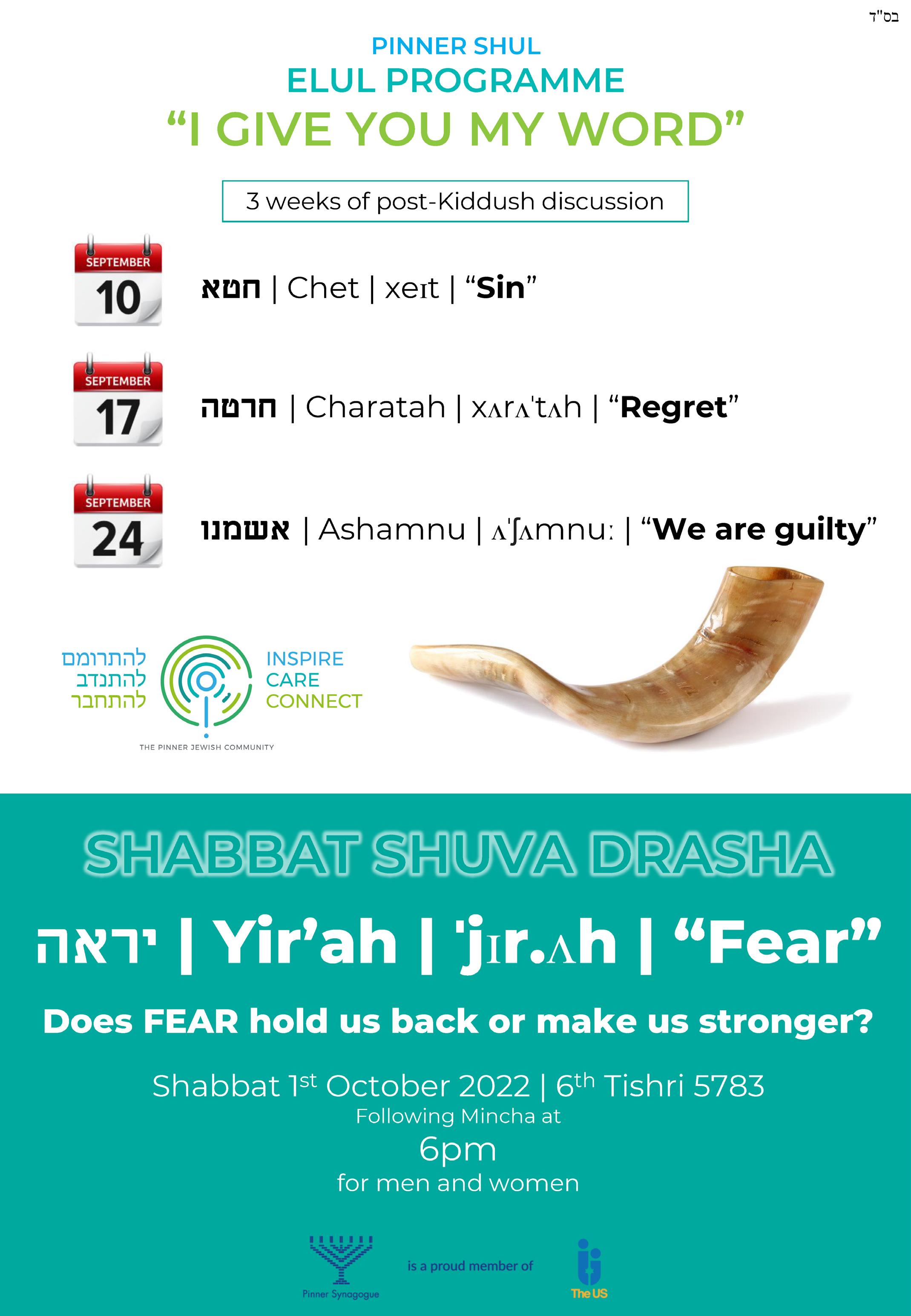
Thoughts & Perspectives � 35 | Rosh Hashanah 2022
Closing a Circle
by Jonathan Lewis Closely based on an article by his son Oliver
In January 1913 Lev, a young Russian army conscript from the port city Odessa in Ukraine, got leave for his wedding. With his wife of two or three days, Mindel – we have a copy of their Ketubah – he kissed his family farewell and boarded a ship in Odessa. Lev and Mindel could not afford the fare, so Lev’s sister Dora gave them money. Weeks later the weary travellers stepped off the ship into the London fog, penniless, knowing nobody, speaking no English, in the hope of a better life.
Lev and Mindel were my grandparents.
Today, more than a century later, Dora has one living descendant – her granddaughter Svetlana, my second cousin. How we found her is a long and poignant story. My family has come to know and love Svetlana. She has visited us several times and come to Pinner Shul, and we have visited her in Odessa.
On 24th February 2022, Russia invaded Ukraine. Soon shelling began in Odessa. Svetlana was adamant that she did not want to leave the home where she had lived her whole life. We set up a Whatsapp group to support her – all we could do was to see how she was and tell her we were there for her. It was strange and disturbing to get realtime updates from someone living in a war zone. On 1st March she wrote:
‘Kherson is surrounded by Russians, there are battles all the time. Kherson is near Odessa. God! I so pray! Please, help us!’
By 4th March she was living with daily air raids:
‘I try to be strong. I hear 2 explosions, it was air raid. And they are near my city. I do not know what will be this night……It is not shelter near my home. In the air raid I am sitting in the bathroom’
By 6th March the fighting seemed to be coming closer: ‘They put rocket in the civil building in the little village near Odessa………Saboteurs and marauders appeared in the city. Shootings were heard yesterday. I won’t leave my home’
It is agonising to have to read words like that and to be able to offer nothing more than sympathy. Early on Monday 7th March we resolved to try again. Oliver wrote:
‘Hi Sveta. I would like to ask you something. I know at the start of the war you decided that you did not want to leave your home in Ukraine. But do you feel different now? I worry a lot about you - I worry that your home may get hit by a missile or that you may run out of food and water if the Russians surround Odessa. My only question for you is
this if we can find a way to get you out of Ukraine safely now, would you want to leave? It is your decision and we will all support and love you whatever you decide.’
To our relief she said ‘Yes.’
And so followed a breathless cycle of activity aimed at getting Svetlana out of Ukraine to safety. We were in contact with World Jewish Relief. An organisation beyond praise, they were in touch with the local Jewish Community - the Chesedin Odessa. We got the message through – a single lady in her 60s with health issues wanted to leave.
On Tuesday afternoon we got the reply we needed. ‘Evacuation arranged for 7am tomorrow morning.’ We primed Svetlana to be ready – just the essentials: passport, medications, change of clothes, phone and charger, title deeds to her flat, previous UK visas. She sheltered in her bathroom when the sirens wailed and the explosions boomed, and waited. We all held our breath – desperately hoping that the war wouldn’t take a cruel twist and scupper our plan. Some of our messages didn’t get through. Had something terrible happened? No – just an outage. She came back online. We woke up on Wednesday to a reassuring message: ‘I am in the bus. We will go to Chisinau, Moldova.’
Svetlana was in an evacuation convoy of three buses and an ambulance. We were relieved she was on the move but uneasy. There had been news reports of Russian attacks on fleeing refugees. She later told us of distressing scenes she had witnessed on the way. At midday:
‘We are 2 hours between 2 borders - Ukraine and Moldova. Do not know when we’ll go’ and then 90 minutes later
‘We had to go through security on Moldova’s border.’
It is agonising to have to read words like that and to be able to offer nothing more than sympathy.
❝ ❞
� Thoughts & Perspectives 36 | Rosh Hashanah 2022
Phase 1 was now complete. We had been planning for phase 2 – what to do once she was safely out of Ukraine. We had told Svetlana that she would be coming to the UK, but she was amongst the earliest Ukrainian refugees and there was not yet a clear visa route.
The EU however was a different story and were offering ‘no questions asked’ entry to Ukrainian refugees. My daughter-inlaw Sandra has family in Paris and asked them if they could help. They replied very quickly that they would take care of her if she could make it to Paris and that a French charity, Fonds Sociale Juif Unifie (FSJU), could get her there on an Air France flight from Bucharest in Romania. By Wednesday afternoon Svetlana was safely in Chisinau – the old Kishinev – the capital of Moldova. The convoy divided for different destinations. By early evening: ‘I am still in Chisinau. I do not know when bus will come. Nobody do not tell.’
Finally: ‘We are on way [to Bucharest].’ And 12 long hours later ‘I am in [Bucharest] airoport.’
We got a message that an FSJU charity worker had met her at Bucharest airport. Together with other Ukrainian refugees (including one accompanied by her pet cat!) she boarded a flight to Paris. At 20:37 on Thursday night we had a message from Sandra’s cousin – ‘Svetlana has landed in Paris and I am with her.’ 84 hours after making the evacuation decision, Svetlana was safely in the arms of family in Paris. It would not have been possible without the generosity and resourcefulness of countless people, some of whom we are close to and some whose names we don’t even know. All are heroes in some small way.
That was not the end of the story. For the next week the Paris family took loving care of Svetlana. Oliver and I applied online for a visa for her. Sandra went to Paris on the Friday to support her as a familiar presence, and I went on the Sunday to accompany her to the British Visa Application Centre on the Monday morning. With pressure from me and support from our M.P. the visa came through on the Wednesday, which was very rapid.
On Thursday 17th March, ten days after she had left her home, Svetlana boarded the Eurostar. It was Purim, and I sat in Shul that morning listening to the Megillah and reading messages about her progress. Some of us were there to meet her when she arrived in London. It was a very emotional moment. I told her that she was my Purim present.
In the weeks before she left, I spoke in Shul about Svetlana and invited people to send her messages of support, and many did. On Shavuot Svetlana came to the lunch in Shul and went around the tables thanking people. Sveta stayed with us for the first month and then with successive members of our family. She has now begun living with support in her own accommodation.
More than a century has passed since Lev and Mindel made their own journey to London. Dora’s gift has echoed down the generations. Blessed through my grandparents’ courage to live here in peace and fulfilment, I feel that our family have been granted the opportunity to redeem a debt.
We can deliver same day or next day, locally, nationally and internationally* *for international deliveries please call shop

3 Pinner Green, Pinner, Middlesex HA5 2AF T: 020 8868 2798 E: shop@mansiflowers.co.uk www.mansiflowers.co.uk
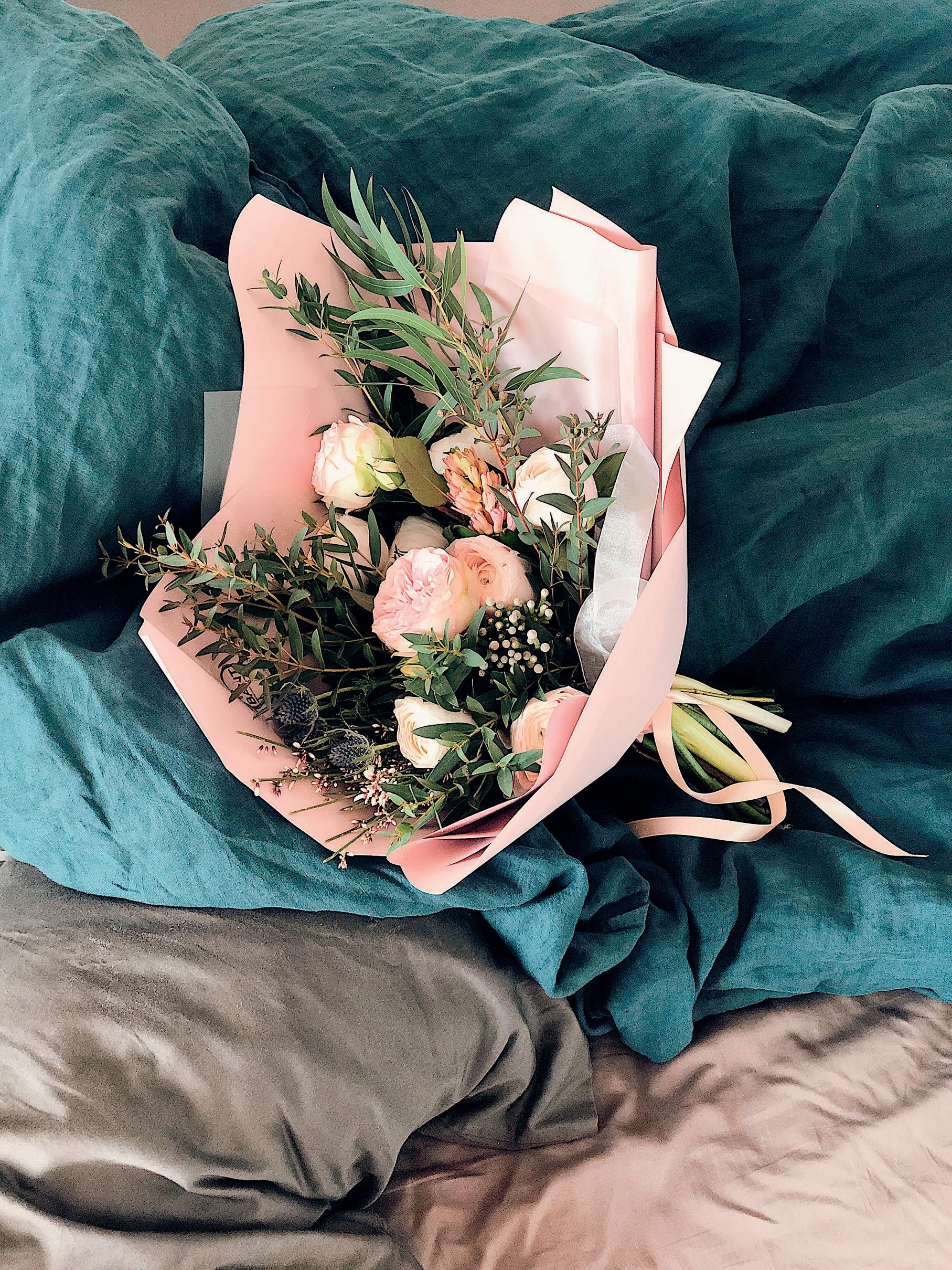
T H E D I R E C T O R A N D S T A F F O F S T A L I A S E R V I C E S L T D
W o u l d l i k e t o w i s h t h e w h o l e P i n n e r C o m m u n i t y a H a p p y & H e a l t h y N e w Y e a r Thoughts & Perspectives � 37 | Rosh Hashanah 2022
Happy and Glorious!
Coronation Memories
The Coronation of Queen Elizabeth II transformed our relationship with the Royal family, as it was the first time that we were able to watch the full pomp and pageantry on television. Our members share some of their memories.

From Jane Leaver
In February 1952, I was nine years old and looking forward to my 10th birthday in March. The news of the death of King George VI at the age of only 56 was greeted with great sadness by most of the population and particularly so by Londoners like my family. We lived in Finchley and I went to school at St. Mary-at-Finchley Church of England Primary School.
On 8th February, Accession Day, our class was marched out of school, two by two, down Regent's Park Road to the local Council Offices, then known as Avenue House in East End Road, to hear the proclamation of the new Queen's accession. My (unreliable) memory is that this was made from a balcony, but it was pronounced in sonorous tones by a man in official robes with other local public figures close by. Possibly the mayor or a herald or even a town crier spoke the words loud and clear.
"Whereas it hath pleased Almighty G-d to call to His Mercy our late sovereign Lord King George the Sixth of blessed and glorious memory, by whose decease the Crown is solely and rightfully come to the High and Mighty Princess Elizabeth Alexandra Mary.
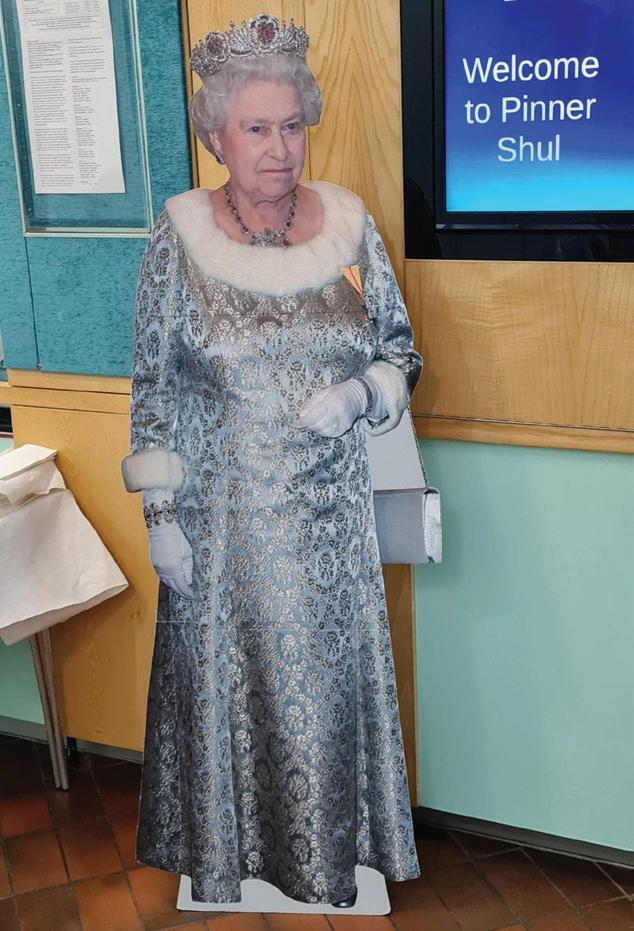
We therefore, the Lords Spiritual and Temporal of this Realm, being here assisted with these His late Majesty's Privy Council, with representatives of other Members of the Commonwealth, with other Principal Gentlemen of Quality, with the Lord Mayor, Aldermen and Citizens of London, do now hereby with one Voice and Consent of Tongue and Heart publish and proclaim, that the High and Mighty Princess Elizabeth Alexandra Mary is now, by the death of our late Sovereign, become Queen Elizabeth II by the grace of G-d, Queen of the Realm and Her other Realms and Territories, Head
of the Commonwealth, Defender of the Faith, to whom Her Lieges do acknowledge all Faith and constant obedience with hearty and humble Affection, beseeching G-d by whom Kings and Queens do reign, to bless the Royal Princess Elizabeth II with long and happy Years to reign over us G-d Save the Queen "
The ceremony definitely made an impact on us as children, but even more than that, it was a cold and grey morning and we stood in the cold for what seemed ages. The boys in short trousers and the girls in short socks and coats, before the advent of warm anoraks, we certainly felt the cold before being marched back into school to continue lessons.On 2nd June the following year, our family gathered round our recently acquired black and white television, in a darkened room, to watch the Coronation in Westminster Abbey. Once again, the weather was poor and the outdoor processions were rather wet, but both occasions were truly memorable and with me, at least, have stayed in my memory
Ruth Freedman interviewed Wally and Hazel Gallick and captured their memories.
Hazel and Wally had been married for just under six years on the day of the Coronation of Queen Elizabeth II. Wally was 29 and Hazel was 27. Their son, David was three. The following is as much as they could recall of the day of the Coronation. Both stated that their memory was quite hazy as it was a very long time ago.
They lived in Beechcroft Avenue, Harrow, next door to Leah and Laz Korney with whom they were close friends. The Korneys had a television, black and white only in those days, which was quite unusual. Most people had to listen to the Coronation on the radio or go there in person. It was a public
� Thoughts & Perspectives 38 | Rosh Hashanah 2022
Thoughts
holiday for everyone. Hazel, Wally and David were invited next door at 12 noon to watch the event, along with close members of the Korney family. They could see the crowds lining the streets as the golden carriage carrying the Queen to Westminster Abbey passed by.

Hazel felt ‘absolutely thrilled that a young woman was Queen in our time’. She recalled that the Queen’s dress was very much designed to suit her figure and ‘covered in pearls’. The ceremony was ‘impressive, touching - it was clear that the Queen was well aware of what she was taking on.’
Prince Philip, on whom she relied for support, was behind her throughout but she was centre stage the whole time. Wally felt there was a perception that this was the start of a ‘happier and more prosperous’ time after the War. They had no particular food to celebrate as some items were still rationed but there was tea and cake after the ceremony which lasted around an hour and a half. They were aware that some people had street parties. Hazel recalled the Royal family appearing on the balcony at Buckingham Palace after the Queen returned.
From Maurice Levitt
At the time of the Coronation I had just got engaged to my dear late wife Evelyn z”l, and was working at Harwell (Atomic Energy Research Establishment) as a newly-qualified post-doctoral Research Physicist.
As a 23-yearold, my memories of 2nd June 1953 are somewhat misty. We were all given the day off and I was staying with my prospective in-laws in Harrow. The day belied its ‘flaming June’ reputation, as it poured with rain. We huddled round an art deco black and white television with a sliding double wood curtain screen and watched everything as it was televised. I was sorry for those that took part and for the crowds of unsheltered onlookers who got very wet. We had a celebratory lunch and raised a glass to the Queen but to my knowledge, no-one we knew went to London as an observer
Although I have not met the Queen, I stood close to King George VI and the late Queen Elizabeth when they officially opened our new post-graduate physics laboratory at Imperial College in October 1951 a few months before the King sadly died. Although as new graduates we were not allowed in the laboratory during the visit, I remember a conversation that took place between the King and one of my senior colleagues. All royal visits are precisely timed, but their Majesties were a few seconds ahead of schedule. They were behind a colleague who, ignorant that the King and
Queen were just behind him, lost his temper with the electron microscope he had made, kicked the table leg, and swore profusely. The King commented with his dry humour ‘Those things are sometimes like that.’
From Ruth Stuber
I was a pupil at Sunderland Bede Girls Grammar School when I was presented with The Coronation Book 1953 by William Le Hardy, the English archivist, a serious rather dull academic account of the history and meaning of the ceremonies at the crowning of H.M. Queen Elizabeth. It was uplifted by two coloured pages, one with a photo of the Queen and the other of three Royal crowns. It started with biblical references to Samuel anointing Saul with ‘a vial of oil’ and later at Mizpeh, the people of Israel shouting ‘God save the King.’ London, which I had never visited, and the Coronation seemed a world away.
A few days later at home in East Boldon there was a buzz of expectation and excitement. Our next-door neighbours announced the arrival of their newly acquired television set and invited us over to watch the Coronation. They lived in a bungalow, with an immaculate garden with beautiful flowers and a large crab-apple tree. Under this tree they had photographed my mother with a very young me and my even younger brother and sister –the only family photograph of us at this age. They had two snappy dachshunds which they adored, and though our rabbit sometimes escaped and vandalised their carefully tendered vegetables they were always polite when they told us about its unexpected visits.
It was the first time I had seen a television set. The black and white flickering grainy images on the very small screen were disappointing, but it was Richard Dimbleby’s hushed reverent tones and accompanying commentary which made the Coronation coverage so memorable. And, of course, the neighbours’ elegant tea with sandwiches and cake, served on their finest porcelain.
Forty years later with my husband Andrew and our three children, I again met our late neighbours’ daughter Margaret and her husband John. They warmly welcomed us into the bungalow which was now their home, and we reminisced about the ‘good old days’ including celebrating the 1953 Coronation together.
& Perspectives � 39 | Rosh Hashanah 2022
CALL THE MINYAN
by David Cohen
Neil Street Productions is commissioned by the BBC to produce the TV drama ‘Call the Midwife’. For those not familiar with this series, the plot follows the work of the midwives and nuns of Nonnatus House, a fictional nursing convent and part of an Anglican religious order.
The Sisters and midwives cope with the medical problems and carry out nursing duties across the community in the deprived Poplar district of London's East End in the 1950s and 1960s. Their primary work is to help bring safe childbirth to women and to look after their new-borns. Nonnatus House is filmed on a specially adapted set built in Surrey, whilst exterior shots of post war Poplar are filmed at the Historic Shipyard at Chatham.
Series 11 Episode 4 was filmed in the summer of 2021 and aired on 23rd January 2022. The team of midwifes are trying to assist a heavily pregnant mother struggling to cope, who refuses help as she compares herself with her much stronger sister. The underlying story, which takes place in 1967, actually concerns her Polish born Jewish husband who is deeply traumatised, having lived much of his childhood in Nazi concentration camps. With a great deal of imagination used by the scriptwriters, the nuns learn that the husband did not have a Bar Mitzvah in the camps and they arrange for him to be called up in the local shul where he recites his parshah. As 23rd January 2022 coincided more or less with National Holocaust Memorial Day, the programme was therefore an acknowledgment of this.
Charlie Fenton and I were asked by Harvey Rifkind, President of Sandys Row Synagogue – the oldest functioning Ashkenazi shul in London - to make up a minyan. We did not know that the real purpose of the call was that we would be playing extras in this particular episode, let alone what was expected of us. The extras, both male and female, were measured up and supplied with clothing and spectacles from 1967. Hair was
styled according to the era, and knitted kippot were verboten, in favour of the black satin variety. The dressers’ attention to the minutiae was remarkable given that neither was Jewish.
When it came to filming inside Sandys Row Synagogue, the attention to detail by the dressers was striking. They were particularly concerned with the way the men’s tallitim hung on their shoulders! The ‘Rabbi’ was also an extra, and I believe he was Catholic! He wore his tallit over a black clerical gown and cap as favoured by many Ashkenazi synagogues at the time. These canonicals were phased out by the United Synagogue in the late 1980s in favour of the civilian style suit and tie.

Some of the seating in the shul had been removed to make room for dolly tracks installed on the flooring, over which camera and lighting could be moved smoothly. During the filming, the hands on the shul clock were moved manually from time to time.
Filming took place whilst one of the two shul’s wardens removed a Sefer Torah from the ark, whilst the actor ‘read’ from the sefer. Camera shots of the ‘father’ were taken at different angles, as he glanced meaningfully at his ‘wife’ in the ladies’ gallery, and also at his ‘father-inlaw’, who we think was Jewish albeit non practising. As extras, we were instructed to stand at the opening and closing of the ark, to sing and to smile, whilst the father ‘read’ from the sefer and glanced at his wife and father-in-law.
The actor playing the father had been
taught the procedures on getting an aliya and on how to sing the opening bracha. He sang these with an eye on a piece of paper on which the words were written in phonetics. He also held, as taught, the Torah pointer, as if he was reading from the sefer, but solely for the purposes of the camera shots.
Filming started at 8.30am and the day lasted some 8 hours, including a kosher meal and tea breaks. I believe that many rolling camera shots were taken in order for the production company to choose those key scenes that created the most emotional and sympathetic atmosphere for this particular dramatic element of the episode.
We realised when watching the programme when it was televised that 8 hours of filming had been whittled down to around 10 seconds! Any voices recorded during those filming sessions were deleted and a voice-over actress playing an offstage character narrated the essence of the episode’s story line and the strengths of the nuns and midwifes in tending to the sick and socially disadvantaged.
I am happy to report that Sandys Row Synagogue received a significant fee from Neil Street Productions - which it desperately needs for the upkeep of the property - and that the male extras waived their fees. Would I play a role as an extra in the future? Perhaps!
� Thoughts & Perspectives 40 | Rosh Hashanah 2022
Coming out of Hibernation
by Geoff Goodman
Hibernation is defined as a ‘dormant period’, or as ‘remaining inactive or indoors’.
In March 2020 Covid hit the world, and the diabolical lockdown was enforced! I started to receive severe warnings, that I, Geoff Goodman, a diabetic, with two heart attacks and six stents, was now designated as a vulnerable person.
So, I was contacted to attend Covid-19 clinics for my vaccinations. I have always been a carefree person, but the daily ‘Boris bulletins’ with Matt Hancock and Genius Witty managed to put the fear into my mind. The ongoing news broadcasts, repeatedly informing everyone how many had died, how many were now in hospital, and which region was the worst affected really upset me. So, I would just look at the headlines and turn off the news.
By 2022, Covid had begun to recede, and it was time to start thinking of coming out of hibernation. My son David had been nagging me to go and visit a very special car located in Bristol. This was a Humber 12 first registered in 1933.

I had first seen this car in 1971 when I worked in finance. I had just qualified as an Associate Chartered Accountant and each day as I walked to the office in Finchley Road, I noticed the old car parked in Fairfax Road. On most days I observed an elderly gentleman at the front of the car swinging a heavy metal bar, which I learnt was a starting handle. I usually stopped and helped the old gentleman - Mr. Couchman - to get the engine to fire up.
Mr. Couchman informed me one cold November morning in 1971 that he was tired of keeping this 38-year-old car in order, and wanted to sell it. When I said I would be interested in acquiring it, Mr Couchman said ‘Come back tomorrow and we will discuss the price.’ I should add that the registered plate letters and numbers were significant - JB 3038 - so anyone with a name like ‘John Brown’ would have a personalised number plate. As a rough guide, even in 1971, this plate number would be worth about £2,000.
So, I met up with Mr. Couchman the next day over a nice cup of tea. I had calculated that £1,000 would be a reasonable price for JB 3038. The conversation went back and forth, as Mr. Couchman asked me how much I was prepared to pay and I asked him how much he wanted. This bat and ball went on for five minutes, until I called out ‘£1,000’. At this Mr. Couchman almost had a seizure and then started laughing. I thought it was now time to leave - but Mr. Couchman continued laughing. He then explained that on
many occasions when he had tried to fire up his car, passers-by would stop and ask him if he would sell the car, but no one had ever offered to help him – except me!
He then told me very forcefully that JB 3038 was mine for £100 – yes, one hundred pounds!
During the next 37 years, I built a garage to keep the car safe in Kenton where we lived, and joined the Post Vintage Humber Car Club. When we moved to Pinner, my friend Martin transported JB 3038 to his garage works in Swindon. The idea was that Martin would commence the restoration gradually, and I would contribute as and when I could.
However, in 2008 a member of the Humber Car Club offered me a cash contribution and a plan to keep me up to date with the rebuild which was to:
Remove car body and check the chassis.
2. Keep and store all chrome parts.
Keep front/rear seats separate – to be re-upholstered in leather.
Rebuild the car frame in wood.
Roll/prepare sheet metal to form doors, bonnet, roof, rear section and boot.
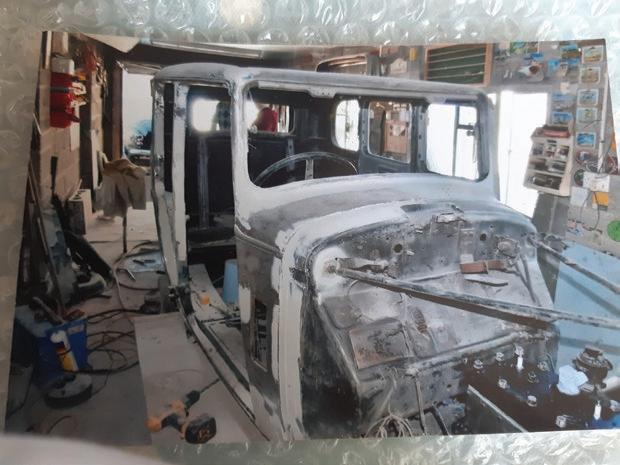
Then begin painting – seven applications.
Send all chrome parts for re-enamelling - door handles/ bumper/headlight edges.
8. Restore engine (12 horsepower – 1669cc, side valve).
This major exercise was carried out by another friend Peter, who lives in Bristol. My son David’s nagging finally succeeded, and he persuaded me to let him drive me to Bristol to meet Peter and see the completed car. Wow, what an amazing sight it was to see that restored 1933 Humber! Peter had bought JB 3038 in 2008 as a retirement project. He is an engineer, but even he was surprised that it had taken 14 years to complete the restoration. As I often say, I don’t like rushing things!
3.
4.
5.
6.
7.
Thoughts & Perspectives � 41 | Rosh Hashanah 2022
The Flora of Western Australia a Tourist’s View
by David Cohen
A visit to family in south western Australia becomes an exploration of a botanical wonderland
When Jane and I arrived in Perth in Western Australia (WA) at the end of March, WA was in the depths of autumn and preparing for an early winter. Nevertheless, at around 32 degrees south, its climate might be described as sub-tropical. Winters are short and mild. Daytime temperatures hover around 18 to 22 degrees in April to June. We left WA three months later at the end of June.
In the Perth area, the soil is sandy. The weather is influenced by the salt from the Indian Ocean. Probably the best place to see the wide variety of flora is in the huge urban open space called Kings Park. Here

is one of the many species of Banksia with its flower spikes and fruiting cones.

Whilst not indigenous to the region, Bougainvillea and Frangipani excel in April and May. We found that such plants thrive in private gardens in the area, alongside plants that are indigenous to south west WA.
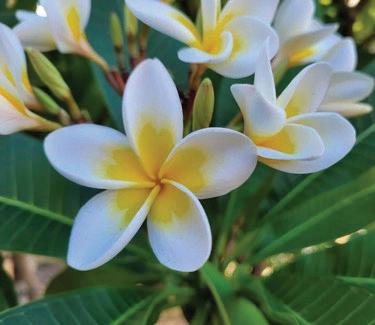

Several trees also flower at that time of year, including the River Red Gum tree, a species of Eucalyptus found all over Australia.
In terms of trees growing in the Perth area, Palm trees native to WA are common, and also Norfolk Island pines.
Banksia
Bougainvillea
Frangipani
� Thoughts & Perspectives 42 | Rosh Hashanah 2022
Some Palm trees are state heritage listed. The Norfolk pines originate from Norfolk Island, situated off the coast of New South Wales. These pines are a distinct feature of Cottesloe, an upmarket inner suburb of Perth. Their origins can be dated back to the beginning of the twentieth century. They were planted with a view to beautifying this suburb. Norfolk pines are well suited to hot, salty sea climates. Their branches are shaped in a flat horizontal planeunlike their ‘cousins’ the maritime pine, which tend to have orange red bark and thinner trunks, and the Nordic pine, which is larger and crown shaped. WA is ten times the size of the UK, so a journey from Perth situated on the Indian

Ocean going southwest to the Southern Ocean is some 480km - although a mere five hours of stress-free driving! We passed through various ‘belts’ on our way to the ‘Great South’, as the southwest area is called - first, the Jarrah and Kari forest areas, then the wheat belt region, then further south, cattle rearing farms, and finally, sheep grazing areas and vineyards.
Jarrah and Karri trees are native to the forest belt and beyond of south western WA. The region is also rich in bauxite (the raw material used in producing aluminium), which is mined. Both trees are hardwoods and are termite, water and disease resistant, which means that they are firm favourites in the construction industry. Both the Jarrah and the Karri are members of the Eucalyptus family and produce gum nuts in the autumn. The trees can grow up to 90 metres tall and the oldest tree is estimated to be around 500 years old. Logging for the construction industry and for the purposes of mining bauxite will be restricted from 2024 to conserve forests. Many of the small logging towns in this belt may well become ghost towns as work dries up.
At the southern tip of WA, at a latitude of 35 degrees south, it is difficult to imagine that one is standing a mere 5,000km from Antarctica. June temperatures range from 8 to 16 degrees with an average monthly rainfall of around 100mm. The ‘towns’ in the Great South are Walpole, Denmark, and Albany.
Plants that flower in June in the Great South were very rare to find, and the picture below comprises either a species of dormant native bottlebrush, or coastal pigface, or tapeworm (platysace). These grow on the coastal pathways by the Southern Ocean.


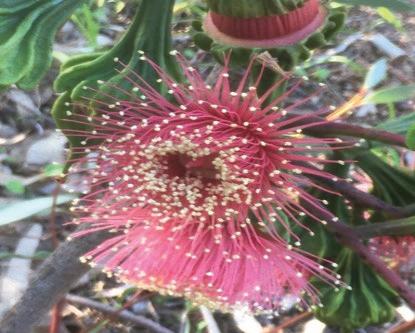
Thoughts
Another plant we found at the most southerly tip of WA, which loves sandy and gravelly soil is Melaleuca Pungens which is a shrub and a member of the myrtle family.
Much of the flora native to WA, and as described in this article, is protected by law, and it is illegal to clear this without prior permission.
One further example is commonly if not obscenely described by Australians as Black Boy. For obvious reasons, the name has become obsolete amongst many, and replaced by the common name Grass Tree or the Latin name Xanthorhoea. The Grass Tree is found in many parts of WA (including parks and private gardens) and also in other Australian states. The leaves are a bluishgreen, and needle-like. The trunk is very often black and rough, thick and corky. The tree is slow growing, although the trunk may grow over three metres, and is made out of leaf rather than wood. The leaves form a spherical spiral spreading around the trunk as they mature.

We look forward to seeing the wild flowers in bloom – best in October - and flora peculiar to other parts of WA. We might also take the opportunity to visit the family again at the same time!
 Red River Gum Tree
The Grass Tree
Norfolk Island Pines
Southern Ocean Bush
Meleleuca Pungens
Red River Gum Tree
The Grass Tree
Norfolk Island Pines
Southern Ocean Bush
Meleleuca Pungens
& Perspectives � 43 | Rosh Hashanah 2022
quality donations

To move or not to move?
by Barbara and Robin Woolf
Is your house unnecessarily large? Have your children fled the nest? Are your stairs too many and too steep? Do you have steps to your front door? Does the path from the front door to the road get slippery? Do your caring children worry about you?
Karen Kinsley arranged two sessions with Sweet Tree Home Care Services last autumn. These gave good advice for the elderly – ‘Move while you can and don’t wait for an emergency’. Maybe your children will help you to declutter, which you will have to if you move into somewhere smaller.
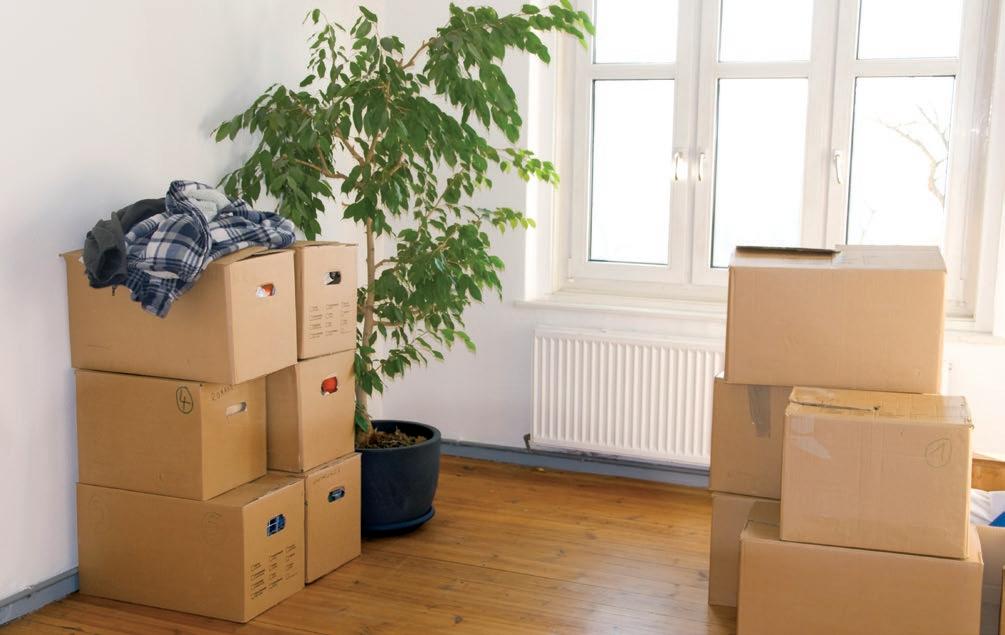
It so happened that a retirement flat was available in Pinner which – amazingly – we both liked!

Moving is a mammoth task when you have been in your home for 36 years. Once we made up our minds to move, we just had to go for it. We were fortunate as we have three daughters who all helped, along with their families. Our USA based daughter came over for a week and very ably sorted out the kitchen with us. Our son-in-law with two grandsons and a nephew spent a Sunday clearing our loft and our garden shed. Robin’s pottery wheel and kiln found a good home with family in Harrogate, and were transported at a reasonable cost. We were pleased to dispose of most of our unwanted possessions to charities. We are grateful to community members who organised car boot sales, took books to Langdon, and disposed of a lot of boxes to All Aboard and other charity shops.
We measured up the rooms in our rather small flat and chose which pieces of furniture we could take with us. So, we are now surrounded by these familiar items that we have had for a long time, along with most of our favourite pictures. An excellent handyman helped us with our storage needs and put up our new Ikea bookshelves.
We consider ourselves to be very fortunate to be part of Pinner Synagogue’s friendly community who inundated us with ‘welcome to your new home’ cards.
To answer the question – yes, move!
We have found that the advantages have definitely outweighed the disadvantages. So, we endorse the advicemove while the going’s good if, like us, you know that you will need to downsize sooner or later!

We need your good
Your donation will help many local worthy causes. Arrange your collection today. Reg Charity No: 1125462 t. 020 8381 1717 e. collections@allaboardshops.com w. www.allaboardshops.com ...and we collect for free! Wishing You A Happy & Healthy New Year Eclipse House, 20 Sandown Road Watford, WD24 7AE Phone 020 8954 6345 | Fax 020 8954 7345 JANNARD QUADRANT INSURANCE BROKERS LTD We wish the Pinner Community a very Happy New Year Stephen SwedenGeoff Callaway | � Thoughts & Perspectives 44 | Rosh Hashanah 2022
Ben-Gurion University Foundation

Sustaining David Ben-Gurion’s vision for Israel’s future in the Negev.
This year marked the 10th anniversary of my work for the Ben-Gurion University Foundation UK, a not for profit organisation supporting Ben-Gurion University of the Negev (BGU), Israel’s fastest growing research university.
by Hannah Allen
For those of you not familiar with BGU, it is the only Israeli university created by a government mandate.
It was established in 1969 with a mission to be a growth engine for the development of Israel’s Negev region, a desert area comprising 60% of Israel’s land mass.
BGU is named after Israel’s legendary first prime minister who said, “It is in the Negev where the creativity and pioneering vigour of Israel shall be tested”. The University has three campuses located in Beer-Sheva, Sde Boker and Eilat and is home to the Ben-Gurion Research Institute for the Study of Israel and Zionism, one of the leading archives in the country and the southern branch of the Israel State Archives. It contains more than three million items that reflect the history of Israel from the early twentieth century until the present day. Among these are protocols of the main organisations of the Yishuv and the State, minutes of meetings, memoranda, letters, photographs, and other documents of the various institutions in which David Ben-Gurion was active.
Another unique component of BGU is The Jacob Blaustein Institutes for Desert Research (BIDR) where international leaders in research related to the desert and technologies, undertake research required for sustainable development of drylands. The institutes are developing strategies that address the most pressing concerns of the modern world: providing food, water and energy in increasingly resource-scarce areas. This work has made Israel one of the few countries in the world where the desert is receding. To take advantage of these well-established strengths and to better translate local approaches into global solutions, last year BGU established its new School of Sustainability and Climate Change. This is a multidisciplinary school that will bring together the knowledge and expertise of over 150 research labs and multiple research centres across BGU’s three campuses, in order to generate impactful solutions to the most pressing needs of our era.
BGU is also home to the National Autism Research Centre which is composed of scientists from BGU and physicians from Soroka Medical Centre. The centre was initiated in 2015 with a focus on building the first regional autism database in Israel and the entire Middle East. Today, the database contains comprehensive information from over 1,000 children who were referred to Soroka displaying symptoms of autism.
This data includes a wide variety of clinical, behavioural, genetic, neuroimaging and other measures from both the referred children and their parents. The research centre takes the best of Start-up Nation, using AI, machine learning and computer vision for early detection of autism.
Beer-Sheva is a multi-cultural society with diverse communities. One of the many wonderful things about BGU is that engagement with the surrounding communities has been a core value of the university since its inception, and BGU's student body plays a crucial role in these outreach efforts. In exchange for scholarships, BGU students contribute to a range of pre-academic and continuing education programmes that make learning accessible to greater numbers of Negev residents, young and old. Much of this activity is coordinated by the Community Action Department, one of the world's most advanced outreach programmes. Students in its flagship programme, the Lillian and Larry Goodman Open Apartments Programme, live in the heart of Beer-Sheva’s older neighbourhoods, engaging in community organising and serving as role models for children and youth. The Negev region is home to a large Bedouin population and over the past decade, the number of Bedouin students enrolled at BGU has been steadily increasing. In fact, over two thirds of Bedouin students are the first in their families to acquire higher education. They also face a range of challenges to their success in academia, from language barriers to financial constraints, lack of access to technological resources, familial pressures, and culture shock. They also tend to be younger than the general student population and over 75% of these students are women. Recognising these challenges, BGU created a special student centre serving female Bedouin students. Serving as a home away from home, the centre is a place where they can relax and feel safe between classes, with space for study and group work, as well as empowerment workshops, women’s health lectures, and social activities.
For further information on anything in this article, or if you would like to join BGUF’s mailing list please email me at hannah@bguf.org.uk
 Bedouin students at BGU ©Dani Machlis-BGU
Bedouin students at BGU ©Dani Machlis-BGU
Thoughts & Perspectives � 45 | Rosh Hashanah 2022
People’s Page
MAZELTOV TO NEW PARENTS
Emily & Michael Silverstone – Son
WELCOME TO NEW MEMBERS
Sandie & David Edelman Gillian & Mark Hartstone
MAZELTOV TO NEW GRANDPARENTS
Elaine & Steve Gee - Grandson Cheryl & Simon Gordon - Grandson Debra & Larry Levin - Granddaughter Shereen & Nigel Presky - Grandson Edna & Norman Terret - Granddaughter Jackie & Ian Silverstone - Grandson
MAZELTOV TO NEW GREAT GRANDPARENTS
Irene Gothelf - Great Grandson
MAZELTOV ON THEIR ENGAGEMENT
Sophie Mindell to Michael Shupac
MAZELTOV ON THEIR WEDDING Sophie Kurzer to Thomas Kulcsar Anna Lawson to Benzion Joseph Daniel Siskin to Emma Izon
MAZELTOV ON THEIR SPECIAL WEDDING ANNIVERSARY
Sophie & Simon Epsley - 1st Anniversary Tanya & Jonathan Mail - 10th Anniversary Candice & Steve Rosenbaum - 25th Anniversary Dawn & Paul Slagel - 25th Anniversary Sam & Ben Jacobs - 30th Anniversary Judith & Stuart Abrahams - 30th Anniversary Gail & Maish Weinstein - 40th Anniversary Marion & Ray Langford - 50th Anniversary Sandra & Richard Breger - 50th Anniversary Corinne & George White - 50th Anniversary Brenda & Alan Rechtman - 50th Anniversary Ann & Tony Korn - 50th Anniversary Simone & Ray Walburn - 50th Anniversary Hazel & Wally Gallick - 75th Anniversary
MAZELTOV ON THEIR 2ND BARMITZVAH
Brian Conway
MAZELTOV ON THEIR BATMITZVAH
Jessica Ross
MAZELTOV ON THEIR SPECIAL BIRTHDAY
Hilary Frohlich - 50th Birthday Karen Knopf - 50th Birthday Ian Bernstein - 60th Birthday
Jeremy Itzcovitz - 60th Birthday
Barbara Nelken - 60th Birthday
Sandra Adams - 65th Birthday
Stephen Nelken - 65th Birthday
Nigel Presky - 65th Birthday
Dee Beth - 70th Birthday
Jonathan Freedman - 70th Birthday
Laurence Harris - 70th Birthday
Ira Miller - 70th Birthday
Linda Minde - 70th Birthday
Hilary West - 70th Birthday
Vera Bernstein - 75th Birthday
Judith Gottler - 75th Birthday
Colin Graham - 75th Birthday
Joy Hodes - 75th Birthday
Simone Ryzman - 75th Birthday
Harvey Simons - 75th Birthday
Angela Taylor - 75th Birthday
George White - 75th Birthday
David Cfas - 80th Birthday
Ivan Kapelus - 80th Birthday
Cynthia Kapelus - 80th Birthday
Leonard Schneider - 80th Birthday Gillian Simons - 80th Birthday
Ivor Barnett - 90th Birthday
Stan Conway - 90th Birthday Gerald Gold - 90th Birthday
Bertram Mindell - 90th Birthday
Renee Binstock - 102nd Birthday Jenny Nemko - Special Birthday
CONDOLENCE ON BEREAVEMENT
Jackie Abramson - Husband
Barbara Conway - Brother
Jonathan Coren - Father
Lance Ettinger - Mother
Claude Fridja - Father
Michelle Hyer - Father
Estelle Kay - Mother
Debra Levin - Father
Howard Lewis - Wife
Sue Line - Mother
Wendy Reece - Husband
Ashley Reece - Father Martin Reuben - Father Debbie Russell - Father
CONDOLENCES TO THE FAMILY OF Yvonne Braude Derek Marks Hugh Sorrell as at 19th August 2022
46 | Rosh Hashanah 2022 � People's Pages
Rosh Hashanah Greetings
ALBERT: Greetings to the Rebbetzen, Rabbi and family together with all our family and friends a happy Rosh Hashanah and well over the Fast. Sue Albert and family.
BETH: Dee & Mervyn Beth wish the whole community a healthy, happy and sweet New Year.
BROOKARSH: Wishing all our friends in the Pinner community a healthy, happy and sweet New Year and well over the Fast. Ruth, Nigel, Ben, Naomi and Zara.

DRESNER: Merrill & Stuart Dresner and family wish the Pinner community a very happy and healthy New Year.
EISENBERG: Shana Tova Umetukah, in person with family and friends, near and far. Sally-Ann Eisenberg.
KLEINMAN: Bronia, Alan and family wish the Community a happy and healthy New Year.


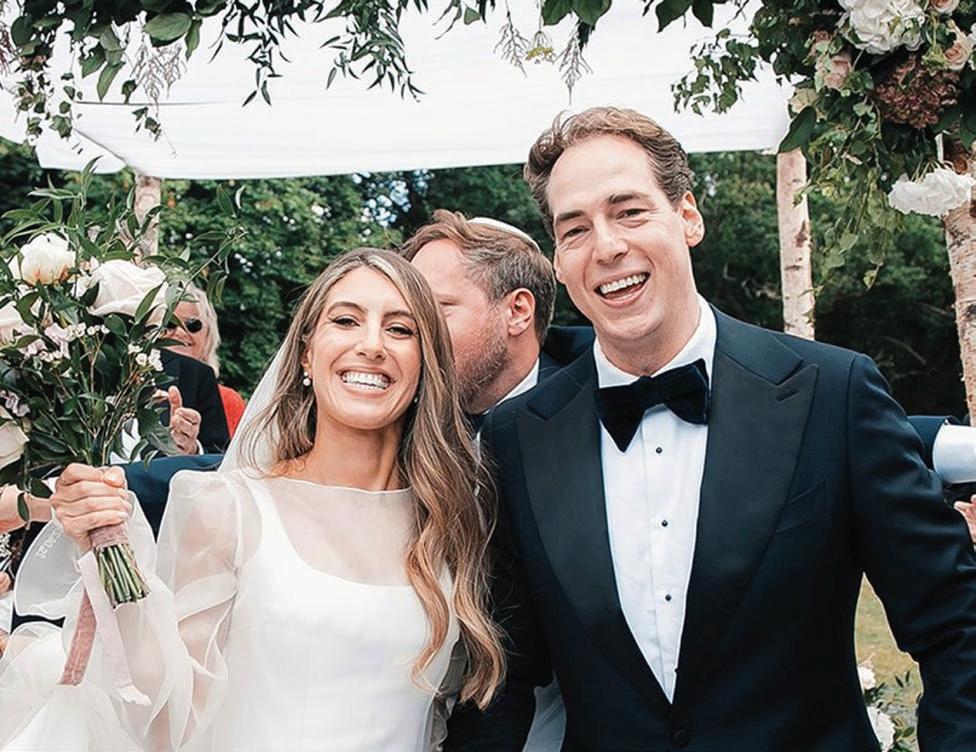
NICHOLLS: Barbara & Anthony wish you all a happy, healthy and peaceful New Year.
OLINS: Lisa, Andrew, Dominic and Toby would like to wish the Pinner Community a happy and healthy New Year.
ROME: Roz & John Rome and family wish all the community a happy and healthy New Year.
ROSEN: Sheila Rosen would like to wish all her friends in the community a happy, healthy New Year and well over the Fast.
TERRET: With our very best wishes for a happy and healthy New Year and well over the Fast. Edna & Norman Terret and family.
WEST: Hilary, Graham and family wish the community a happy New Year and well over the Fast.
Jessica Ross
Sophie Kurzer & Thomas Kulcsar
Anna Lawson & Benzion Joseph
Daniel Siskin & Emma Izon
47 | Rosh Hashanah 2022 People's Pages �
Beekeeping in Pinner What’s the Buzz?
by Judy Roth
Question: Why did we start to look after bees?
Answer: Keeping bees is a contribution to saving the world. Bees are under threat and need all the help they can get. Also it’s a fascinating thing to do; looking inside a hive, you see a world within a world.
I wanted to try to help this important pollinator by looking into beekeeping. I booked on a course in beekeeping with the Pinner and Ruislip Beekeepers’ Association. It was cancelled due to Covid restrictions and the following year they did the theory part on Zoom with limited and safe practical sessions in person. I recruited David to do the course with me and it turned out to be a great lockdown project.
We learned a lot about the complex business of bees and beekeeping, but there’s still more to discover.
Bee facts:
The honeybee is the best-known bee, but there are over 270 species of bee recorded in the UK.
Bees can fly as far as five miles for food, but on average they fly less than a mile from the hive.
The top speed of a worker bee is around 15-20 mph when flying towards a food source, about 12 mph when returning with nectar, pollen, propolis or water.
Honeybees’ compound eyes are sensitive to blue colours. Flowers reflect large amounts of ultraviolet light and appear very bright to bees.
Since 1900 the UK has lost 13 species of bees and a further 35 are under threat of extinction. They are not protected by law.
Causes of bee decline include things that affect us too. Change in land use, habitat loss, disease, pesticides, farming practices, pollution, invasive non-native plant and animal species and climate change are some of the contributing factors.
We completed practical sessions for which we needed a bee suit and hive tool. The experts showed us how to inspect a hive and understand what we saw. We were advised to wait a year before getting bees to give us a chance to learn and experience more. However, a friend offered us a swarm and we accepted our first bees. We hurriedly bought a hive with frames and placed the bees at the bottom of the garden. Our neighbours’ reactions ranged from interested and wary to very enthusiastic.
Now we regularly inspect our bees and check the frames to see that all is well. We look for the queen bee, whether there are new eggs (which look like a grain of rice in a cell), larvae and brood. Even though she is very large, it is really

48 | Rosh Hashanah 2022 � Home & Away
difficult to spot the queen as there are thousands of bees milling around her. Evidence of new eggs and developing larvae indicate her presence. We check for viruses and signs that the bees may be about to swarm. If bees swarm and find another home, then their new ‘owner’ can claim them and you will have lost your bees. To prevent swarming, we carry out regular checks to see that the queen is producing new eggs. If not, we can consider replacing the queen, or adding extra boxes with more frames or brood boxes. There are between 40,000 to 60,000 bees in a hive.
An obvious hazard associated with keeping bees is getting stung from time to time. A little anti histamine goes a long way and the stings wear off after around a week for me, though that varies from person to person.
❝
Wearing a bee suit and being gentle and calm with the bees minimises risk. They only sting when they feel threatened. He is not worthy of the honeycomb/ That shuns the hives because the bees have stings. - William Shakespeare
We helped the local association to harvest honey from the association hives. It was fun and interesting and the honey
tasted delicious. The association sell their honey to raise funds for maintaining the hives and equipment. As new beekeepers we are still on a learning curve and we are hoping to harvest our first honey at the end of the summer.
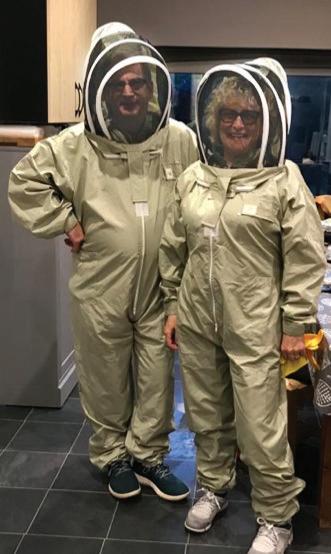
❝
How doth the little busy bee Improve each shining hour, And gather honey all the day From every opening flower! - Isaac Watts
If you want to help bees:
Plant more bee friendly plants, blue/ purple colours are best. Use less insecticides in your garden. Cut the lawn less often or allow a wild area in the garden. Provide water.
❝
Where there are bees there are flowers, and wherever there are flowers there is new life and hope. - Christy Lefteri
If you’re interested in keeping bees contact Pinner and Ruislip Beekeepers’ Association and sign up for their next course https://prbka.co.uk/ Friends of the Earth https://friendsoftheearth.uk/nature/14-facts-you-need-know-aboutbees#:~:text=The%20Honey%20bee%20is%20probably,up%20of%20 a%20single%20pair.
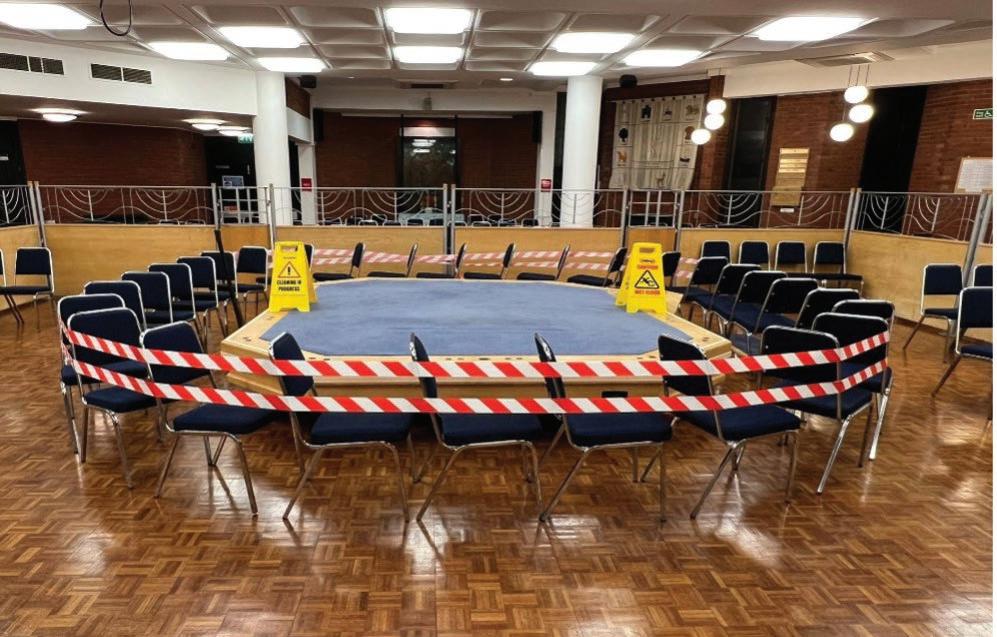

British Beekeepers’ Association https://www.bbka.org.uk/how-far-does-a-bee-fly-how-does-it-navigate RHS: https://www.rhs.org.uk/wildlife/garden-bees.
The Wheels on the Bimah
– still going round and round

You may have heard that recently we had to replace the wheels under the Bimah.
This was quite an operation with the Bimah weighing at least 1,000kg. It required jacking up to replace the eight wheels. Fortunately, we had the services of Robson, one of our caretakers, who is a mechanic and was able to do the work. You can read about him on page 21.
The bimah in ‘boxing ring’ mode
One of the broken wheels
49 | Rosh Hashanah 2022 Home & Away �
What's cooking?
Honey roast vegetables
Many root vegetables can be made a bit more interesting by being roasted with honey
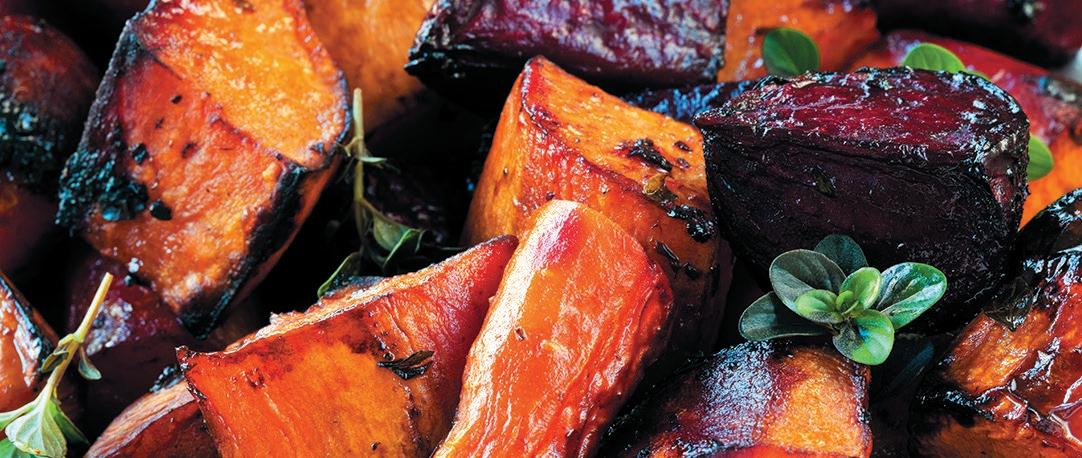
Ingredients
Choose from the following – three or four is usually enough:
» Butternut squash
» Parsnips
» Sweet potatoes
» Carrots (smaller, sweeter ones are best)
» New potatoes
Method
1. Heat the oven to 200 degrees, and pre-heat roasting tin.
2. Cut chosen vegetables into even size chunks/slices. No need to peel small carrots or new potatoes.
3. Mix in a bowl with honey/oil.
4. When tin is hot, add veg, season and add
» Beetroot
» ¼ cup runny honey
» ¼ cup olive oil/sunflower oil
» Salt and pepper
» Fresh thyme or rosemary (optional)
thyme/rosemary sprigs. If you are using sweet potatoes, add 10 mins later, as they tend to soften and brown more quickly. Try not to crowd the tin too much.
5. Cook for about an hour, until soft and crisp round the edges. Shake the tin occasionally to loosen the vegetables. Remove the thyme/rosemary before serving.
Salmon with honey and ginger Ingredients

» 1 spring onion, sliced thinly
» 2 tbsp soy sauce
» 1 tbsp rice vinegar/sherry
» 1 tbsp honey
» 1 tsp grated fresh ginger
» 4 salmon portions
» 1 tsp toasted sesame seeds
Method
1. Put all the ingredients into a ziploc bag.
2. Allow to marinade for 15 minutes.
3. Heat up the grill.
4. Add the fish to a pan (keep the remaining marinade)
5. Grill for 7-9 minutes. (I usually grill for the first 5 minutes or so for the salmon to get some colour, then turn on the oven to finish cooking through).
6. Top with remaining marinade and serve. Goes well with noodles and a few stir fried vegetables.
50 | Rosh Hashanah 2022 � Home & Away
More people are struggling with mental health than ever before.



Together we can make
a life-saving difference
Registered charity no. 1003345. A company limited by guarantee. Registered in London no. 2618170 JamiPeople | JAMIMentalHealth jami_uk | Jami UK Please help us to support everyone in the community who needs us. Donate today at jamiuk.org/donate Thank you.
How does Chai care?

“A dove is a symbol of hope and freedom. In Chai’s Art Workshop, we are free to express our feelings and creativity in calm surroundings, and feel uplifted by the support of the group.

Chai’s care and shining light give us the strength and ability to face the daily challenges in our lives.”
The Chai Art Workshop Group (Artist Sharon Wakefield)
more information on
of
call our Freephone helpline on

Chai Lifeline Cancer Care Registered Charity No. 1078956 For
our extensive range
specialised services and care across the UK, please
0808 808 4567 or visit www.chaicancercare.org
L 07760 444 779 or 07774 442 047 k info@looking4care.co.uk THE AREAS WE COVER Greater London | Central London Hertfordshire | Essex Looking4care is a domiciliary care service specialising in live-in care for older people who wish to remain in their own homes rather than residential care. www.looking4care.co.uk E @Looking4care Q @looking4care_ C @looking4care Get Social With Us
Pinner Shul Book Club

EXPLORING PEREK SHIRAH
by Shoshana Tugendhaft
Reviewed by Laura Sidnick
This new book from Mosaica Press is written by my friend Shoshana Tugendhaft. As well as having a stunning cover, it contains many beautiful essays in Torah thought. This is definitely a book for nature lovers! Each chapter stands alone, and follows an ancient text called Perek Shirah, in which many different elements in nature, such as rivers, trees, birds and fish have some Torah wisdom to teach us, which is explored in depth.
The book seeks to answer the question: why was this particular piece of Torah wisdom placed ‘in the mouth’ of this particular element in nature? Why, for example, do the frogs teach us about martyrdom? Why do the camels teach us that G-d mourns the loss of His temple? Why do grapes teach us that the Jewish people are eternal and will never be completely destroyed?
When Shoshana’s first grandchild was born very prematurely, she started to recite Perek Shirah daily as a segulah, a special merit, that the baby should survive and be well. She found that there were no in-depth books in English that explained what Perek Shirah was about so she decided to write up her research into this topic. As a teacher of Tanach, she was able to access all the Hebrew sources and bring them together here. She wrote the entire book as a merit for the little baby. Thank G-d little Chaya Ruchama is now three years old and is doing really well. One of the book’s special features is that even though it is written entirely in English, Shoshana gives the Hebrew wording of her sources in a footnote to the page. This is so that scholars can read it in the original language of composition, which is always more authentic than any translation. In the English section of the page, the sources are brought in direct translation instead of paraphrasing them, so that the reader can engage directly with the rich Torah tradition of our Sages instead of having a mediated encounter.
Another feature of this book, a more light-hearted one, is that each chapter is given a tongue-in-cheek heading that reflects both its Torah teaching, and references to the animal that declares that Torah teaching. For example, the chapter of the song of the Frog is called ‘Leap of Faith’ and the chapter about the Fox is called ‘Royal Slyness’. The Cows tell of ‘Herd Immunity’ and the Grasses…well, they have started a ‘Grass Roots Movement’. To see why these chapter headings are so apt, you have to read the chapter!
Shoshana is a teacher of Jewish history and she even conducts tours in the British Museum. As this is her special interest, she often adds a paragraph at the end of the chapter in which she views the Torah teaching of that chapter within the context of when it was written. Perek Shirah was written in the second century of the Common Era, which was a time of huge upheaval and trauma for the Jewish people who were now dispersed all over the Roman Empire. Think, for example, of the destruction of the Temple that had only recently taken place and of the failed Bar Kochba revolt that was so brutally put down by the emperor Hadrian, just half a century later. Perek Shirah was written at this time and its teachings therefore reflect the concerns of the Rabbis of that era.
I highly recommend this book. Firstly, it will look beautiful on your coffee table! Secondly, it contains about 90 short standalone essays that you can learn whenever you have some time. However, it is a serious book, that needs to be learned rather than read. Its ideas are sophisticated and deep. The medieval commentators explain that Perek Shirah is also deeply kabbalistic. Its words reflect the spiritual roots of nature and in studying it, we can bring down the life force of the Creator into nature. This makes learning this book more meaningful. Exploring Perek Shira is available from www.mosaica press.com at $24.99
Laura Sidnick & Shoshana Tugendhaft
53 | Rosh Hashanah 2022 Home & Away �
 Avid Old Swan
Avid Old Swan
A Yom Kippur Tale
Or You Cannot Lose a Man of 100!
By Eric Samuel, a true story about his father-in-law Joseph Angelman
I went to Service for Kol Nidre
At the Harrow Arts Centre that night
To pray with my friends in Pinner
When I got home there was a fright.
That young man called ‘Angelman, Joseph’
A temperature as high as his age
The Doctor was called, and decided Best place was hospital for the sage
The ambulance was called from Barnet
For the care of Medics to recover
And duly delivered the boy wonder Weather atrocious, though no thunder Russ and I, we both stayed late
To see Joseph settled that night
And because we were fasting No one had anything to ate
A visit delivering specs and shaver next morning
No, they said at Juniper Ward, a warning We don't have a man that you're looking for You might try next door for that ‘Angel’, or more
The Sister at Lime Ward was worried As ‘Angel’ she had an admission indeed But that was not man, but a woman
And through all this concern, I took heed
And said, ‘But you Cannot Lose a Man of 100!’
The Rabbi had said at Kol Nidre
All the best for Joseph's birthday
But now unless he can be found
Who's going to drink all the bubbly?
'How could they lose a man of 100?'
Back on Juniper Ward he is found Thank goodness, or else what sound
Would I hear from my Sheila, and his wife Freda?
‘How could they lose a man of 100?’
At Neilah I offered a small prayer for recovery
Our family reunited again for discovery
The wives and grandsons, a picture of the Queen
We celebrated Joseph’s cake-cutting with this scream
‘How could they lose a man of 100?’
Later, we were puzzling as we cleared up to depart Where was the picture of the Queen? Where was this work of art? We asked around and found the culprit wasn’t far away As Freda said ‘another woman won’t share my Joseph’s day!’
1 2 3 4 5 6 7 8 9 10 11 12 13 1415 16 17 18 19 20 21 22 A Cryptic Crossword
Answers on page 57 Across 7 Contract is unable to include cooker (8) 8 Carrier brings back both the French (4) 9 Car of the month? (6) 10 Unkind about tiresome yiddishe bore (6) 11 Fire consuming French horns (7) 12 Some prize merry Hebrew song (5) 14 Champion died as Roman appointee (5) 16 Weekly reading of average Persian ruler (7) 19 Unsavoury taste when trouble first appears in unruly tribe (6) 20 Russian caught in severe heat blast (6) 21 Royal family go first (4) 22 Charlie entertains a pastoral carer (8) Down 1 Reluctant prophet changing direction, accepting one king of Judah (6) 2 Met stage spoof playing as short-term attraction (4,2,7) 3 Flood portrayed by East London resident artist (7) 4 Close at one and repent (5) 5 Sacred old seal broken to reveal ancient text (4,3,6) 6 Sanction about morning shortage (6) 13 Time passes quickly though hungrily (4,3) 15 Concerning expulsion of team covered with horrid lice (6) 17 Repeated account with top grade wood (6) 18 Say thanks to motorists' friend in good English (5) 55 | Rosh Hashanah 2022 Home & Away �
Budapest’s Rumbach Street Synagogue a new lease of life
by Margery Cohen
Just over a year ago, after decades of neglect and years of renovation, the Rumbach Street synagogue, located just a few streets away from the Great Synagogue in Dohany Street, finally opened - and is certainly one of the most beautiful Jewish monuments in Hungary.

When Hungary was granted independence in 1867, the equality and political rights of its Jewish citizens were finally recognised. An assimilation process began, bringing reform ideas into Jewish religious thinking. The process resulted in the split of Pest Jewry in 1868 into three branches - the Great Synagogue in Dohany Street, the Orthodox synagogue in Kazinczy Street, and the recently renovated Rumbach Street synagogue. On my last visit to Budapest four years ago, it was under scaffolding, so last month I was excited to see that it had been consecrated in June 2021 and is now open to visitors. I was certainly in for a treat!
The plot on Rumbach Sebestyén utca (the
full name of the street) was purchased by the community in 1865. A design tender issued for a new synagogue was won by one of Vienna’s most famous Art Nouveau architects, Otto Wagner, then only 27. This was his first major project, using the modern cast iron supports mechanism which was still a novelty in the early 1870s.
His modern plans had won over the trust of the community.
The synagogue is located in a narrow side street, so you have to lean against the wall of the opposite building to get a wider view and a decent photograph.
On the outside, two minaret-like, domed towers rise over the symmetrical façade, whose centre is decorated with doubleframed windows and two stone tablets.
The stunning octagonal interior is topped by a high ornate dome, with eight slender iron columns and Moorish-style Alhambra capitals. On the walls, are gold, blue and red hand painted panels. At nearly two storeys tall, the Ark still reaches less than halfway to the magnificent domed ceiling. Colossal gold columns support Easternstyle arches, illuminated by stained glass windows ten feet in diameter. In place of the former wooden benches, there are now chairs, enabling the synagogue space to be transformed easily into a concert venue. A unique feature is the impressive retractable bimah that stands on a freely moveable, hydraulic lifting device, and sinks completely out of view into the floor, enabling the space to be used for events as required.

56 | Rosh Hashanah 2022 � Home & Away
The Second World War had hit the synagogue hard and partially destroyed it. In 1941, it served as a deportation point for 20,000 Jews who were herded there before being sent to occupied Kamianets-Podilskyi, where German soldiers eventually killed them. During the Siege of Budapest in early 1945, the ceiling and staircase suffered bomb damage. However, the real devastation began in the late 1970s, when the roof of the ruined building was torn down. From then on, rain, snow and birds were given free access to the synagogue space.

Then in 1988, a year before the fall of Communism, the Federation of Hungarian Jews sold the building to the Alba Regia State Construction Company a state-owned company that undertook to restore and convert the building into a conference and event centre, and to sell it on thereafter. In the process, Alba Regia destroyed most of the interior of the building leaving no traces of its former Jewish functions. Fortunately, a few years later with the return of capitalism, Alba Regia went bankrupt, so its plans were never carried out!
After changing hands numerous times, the building was eventually returned to the Jewish community by the Hungarian Government in 2006. During the renovation, many of the original elements have been faithfully restored, or have miraculously escaped the misery of recent years, making them the original pieces designed at the time of Otto Wagner. The women's gallery now hosts an exhibition presenting the history of the synagogue and Pest Jewry. On the first floor, two multifunctional rooms house smaller events and exhibitions, while on the second floor, a kosher-meat café has opened. An exhibition space on the third floor tells the story of the notable Politzer family (including media magnate Joseph Pulitzer) as an example of Jewish integration and contribution to Hungarian society.
The Rumbach’s reopening has been the result of years of negotiations, patience, and a generous grant from the Hungarian state. It will be a cultural jewel at the hub of Jewish society, in this cosmopolitan and vibrant European capital city.

p 55 Crossword Answers: Contact us for more information enquiries@ajr.org.uk · www.ajr.org.uk · 020 8385 3070 AssociationofJewishRefugees @TheAJR_ Crossword Answers J 1 M 2 R 3 A 4 D 5 F 6 C 7 O V E N A N T E 8 L A L S S I O A M N 9 I S S A N N 10 U D N I K A O B E S N S 11 H O F R O T Z 12 E M E R P W F 13 A H 14 E 15 R O D P 16 A R S H A 17 H X T G 18 S C C B 19 I T T E R T 20 E R U A H L A A D O C K 21 I N G C 22 H A P L A I N C E E Y L A 57 | Rosh Hashanah 2022 Home & Away �
Where have all the flowers gone?


This summer has certainly proved to be unlike any other many of us have ever experienced in terms of the weather. We saw flower buds wither, leaves droop, and lawns turn brown. However, GardensRus bring you a selection of pictures to enjoy from Pinner and further afield.
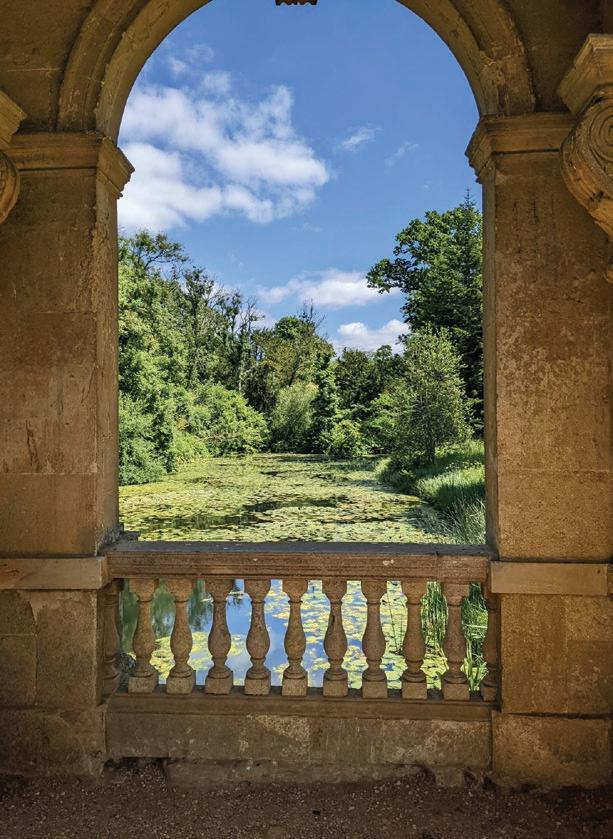

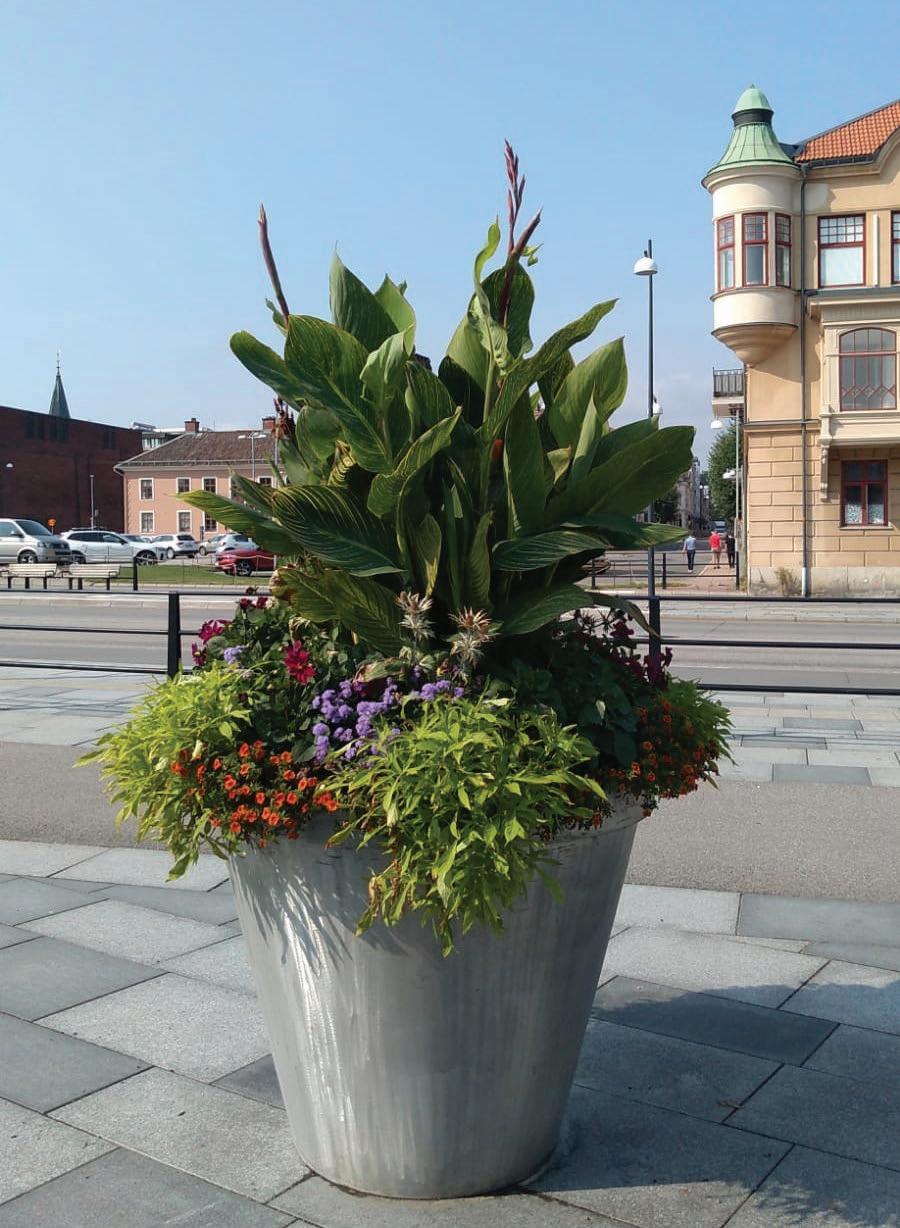
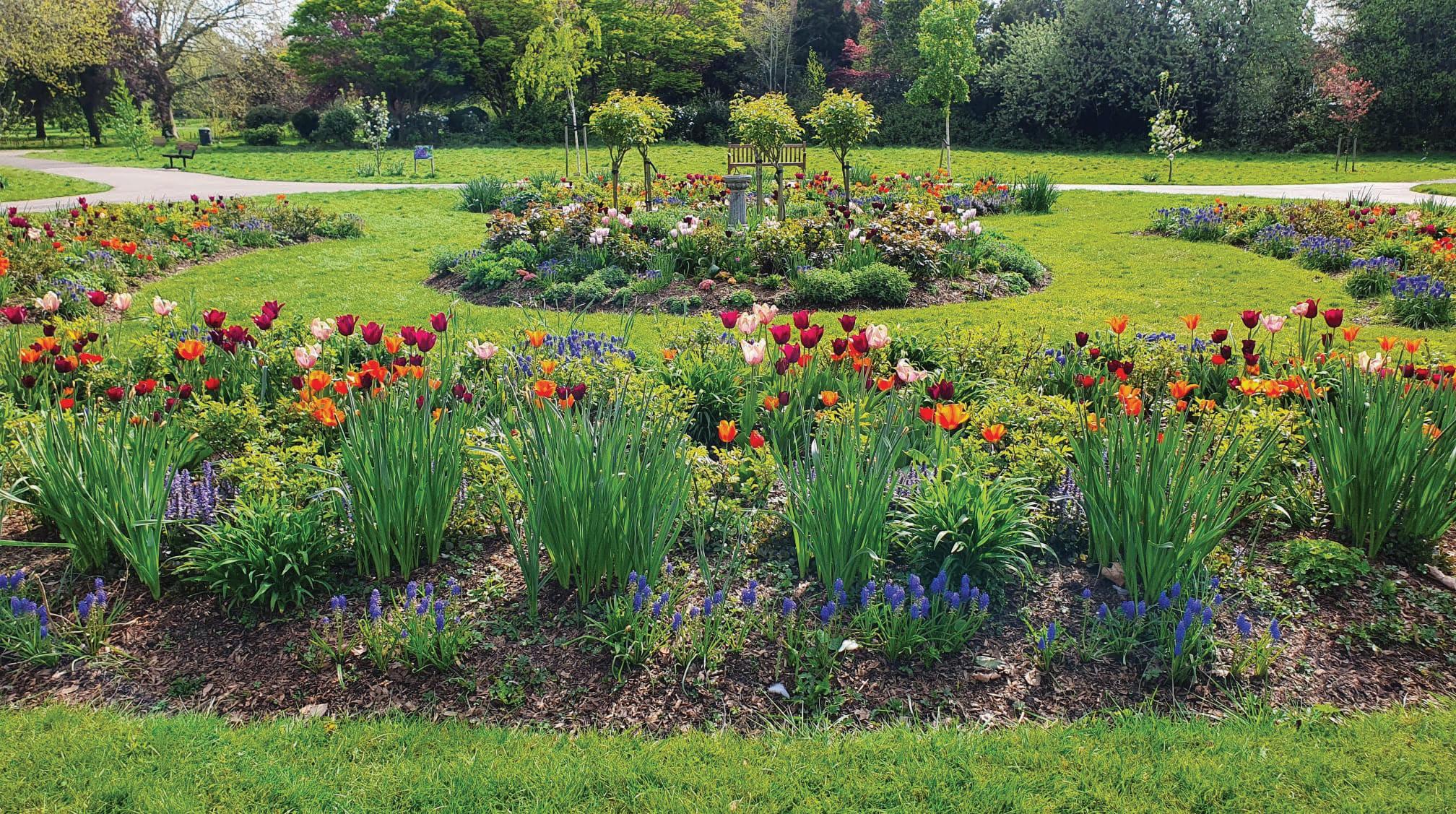 One of the pretty planters at Skovde bus station, Sweden
Pinner Village Gardens in April
Incredible bougainvillea on the island of Kos
Bottlebrush in Tropical Pinner! Just shows you how much the climate has changed!
Through the arch at Stowe
Wisteria in profusion
One of the pretty planters at Skovde bus station, Sweden
Pinner Village Gardens in April
Incredible bougainvillea on the island of Kos
Bottlebrush in Tropical Pinner! Just shows you how much the climate has changed!
Through the arch at Stowe
Wisteria in profusion
58 | Rosh Hashanah 2022 � Home & Away
You don'tneed to lead a la-di-dalifetoleavea legacy


Don'tlettheword"legacy"putyouoffleavingagifttocharityinyourwill.Itmaysound alittlefancy-shmancybut everydonation,largeorsmall,willhelpyourfavouritecharity improvethefutureforallourchildren. Legacy,shmegacy Leavealittlesomethingtocharity Findoutmore: T:02033756248 E: gina@jewishlegacygiving.org.uk www.jewishlegacy.org.uk Registeredcharitynumber1144193
Everywhere you turn there’s someone in need of Norwood
More people than ever need Norwood’s help. In fact, one in four people will need Norwood over the next three years*. We help support children and families in crisis, and people of any age with learning disabilities or autism. But we can’t do it without you. Please support Norwood with a donation this Rosh Hashanah.
[Survation, October
to make a donation today. Alternatively, visit norwood.org.uk/donate or scan the QR code using your
020 8420

To find out how, please call 020 8809 8809 or visit norwood.org.uk/buckets
Call
6970
smartphone. Patron Her Majesty The Queen Reg Charity No. 1059050 *Source:
2021]























 Michael Goldstein
Michael Goldstein







 Chief Rabbi Mirvis, Rabbi Kurzer and Rabbi Jesse Horn
Chief Rabbi Mirvis, Rabbi Kurzer and Rabbi Jesse Horn



 by Gerald Isaac
by Gerald Isaac

































































 by Rachel Mindell
by Rachel Mindell






















 by Simon Hodes
by Simon Hodes
























 Red River Gum Tree
The Grass Tree
Norfolk Island Pines
Southern Ocean Bush
Meleleuca Pungens
Red River Gum Tree
The Grass Tree
Norfolk Island Pines
Southern Ocean Bush
Meleleuca Pungens





 Bedouin students at BGU ©Dani Machlis-BGU
Bedouin students at BGU ©Dani Machlis-BGU


















 Avid Old Swan
Avid Old Swan









 One of the pretty planters at Skovde bus station, Sweden
Pinner Village Gardens in April
Incredible bougainvillea on the island of Kos
Bottlebrush in Tropical Pinner! Just shows you how much the climate has changed!
Through the arch at Stowe
Wisteria in profusion
One of the pretty planters at Skovde bus station, Sweden
Pinner Village Gardens in April
Incredible bougainvillea on the island of Kos
Bottlebrush in Tropical Pinner! Just shows you how much the climate has changed!
Through the arch at Stowe
Wisteria in profusion


